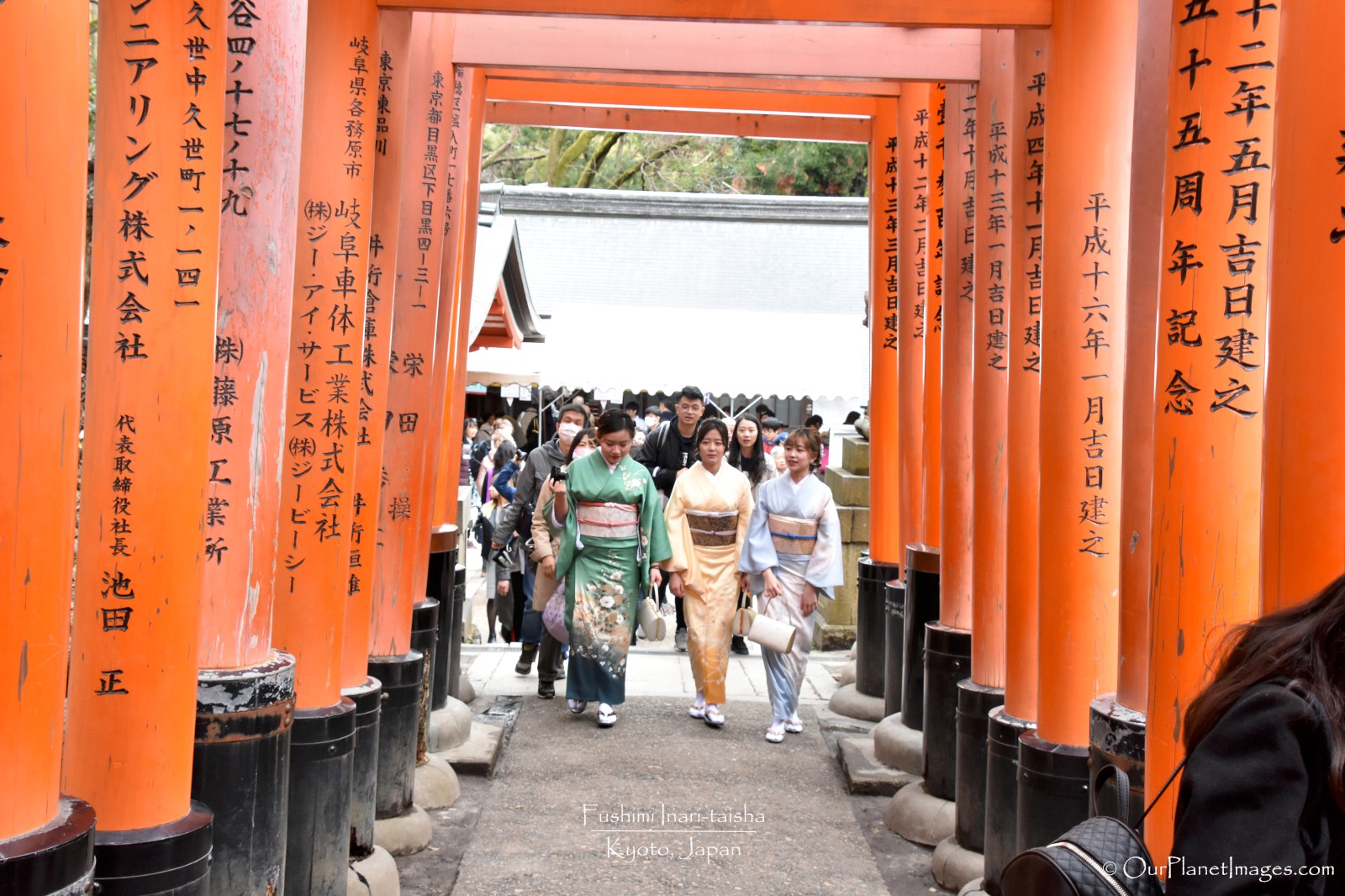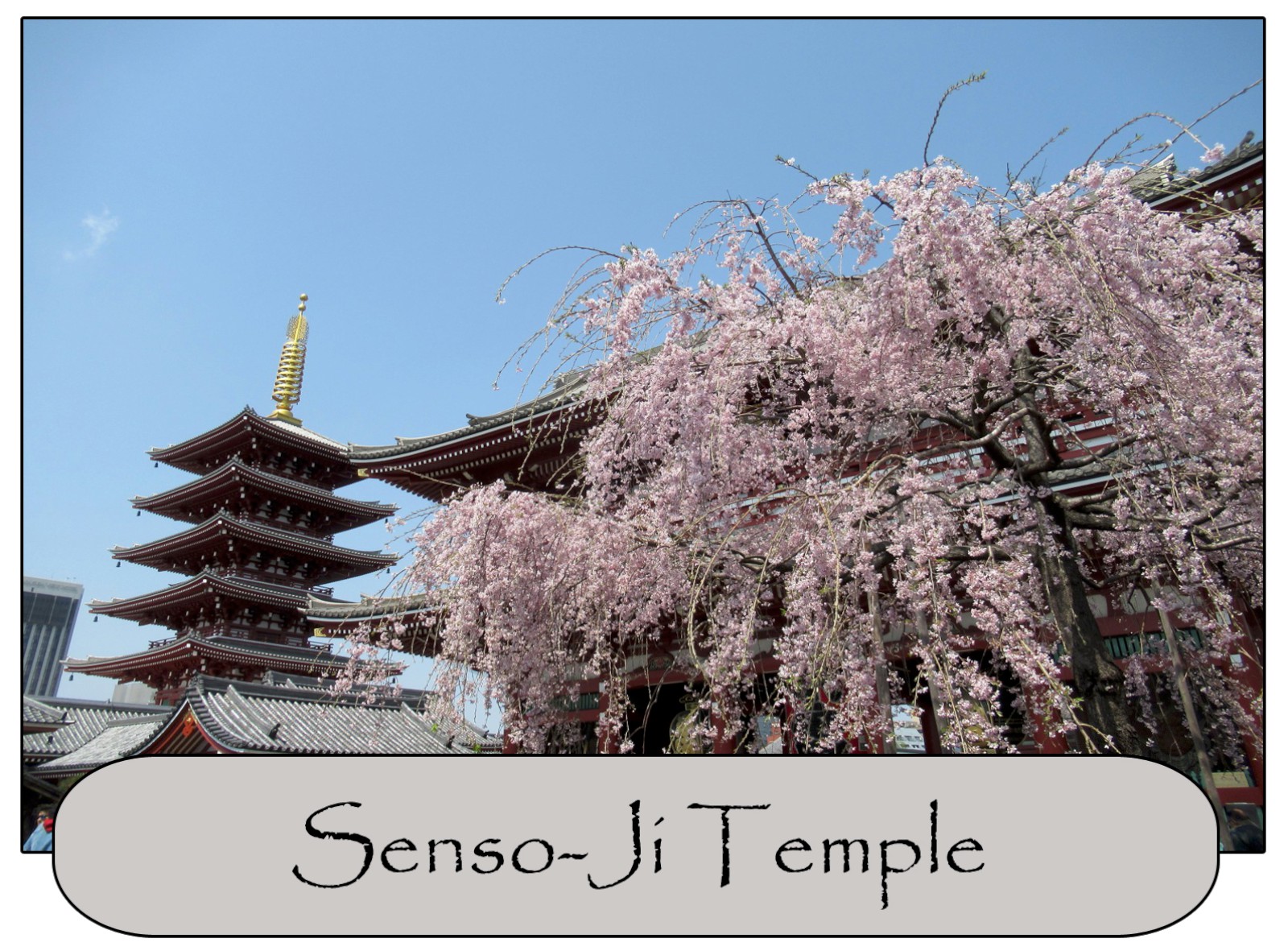Fushimi Inari-taisha Shrine is located in Kyoto, Japan and is one of the most iconic sights in Japan. The shrine was founded in 711 AD and is one of Kyoto’s oldest and most significant places.
The complex consists of five main shrines and several sub-shrines scattered on the wooded sloping hillside but the shrine is most famous for the seemingly endless vermilion torii gates on the pathway through the woods.
It is difficult to describe a site like this but the map below provides a pictorial view of the site layout.
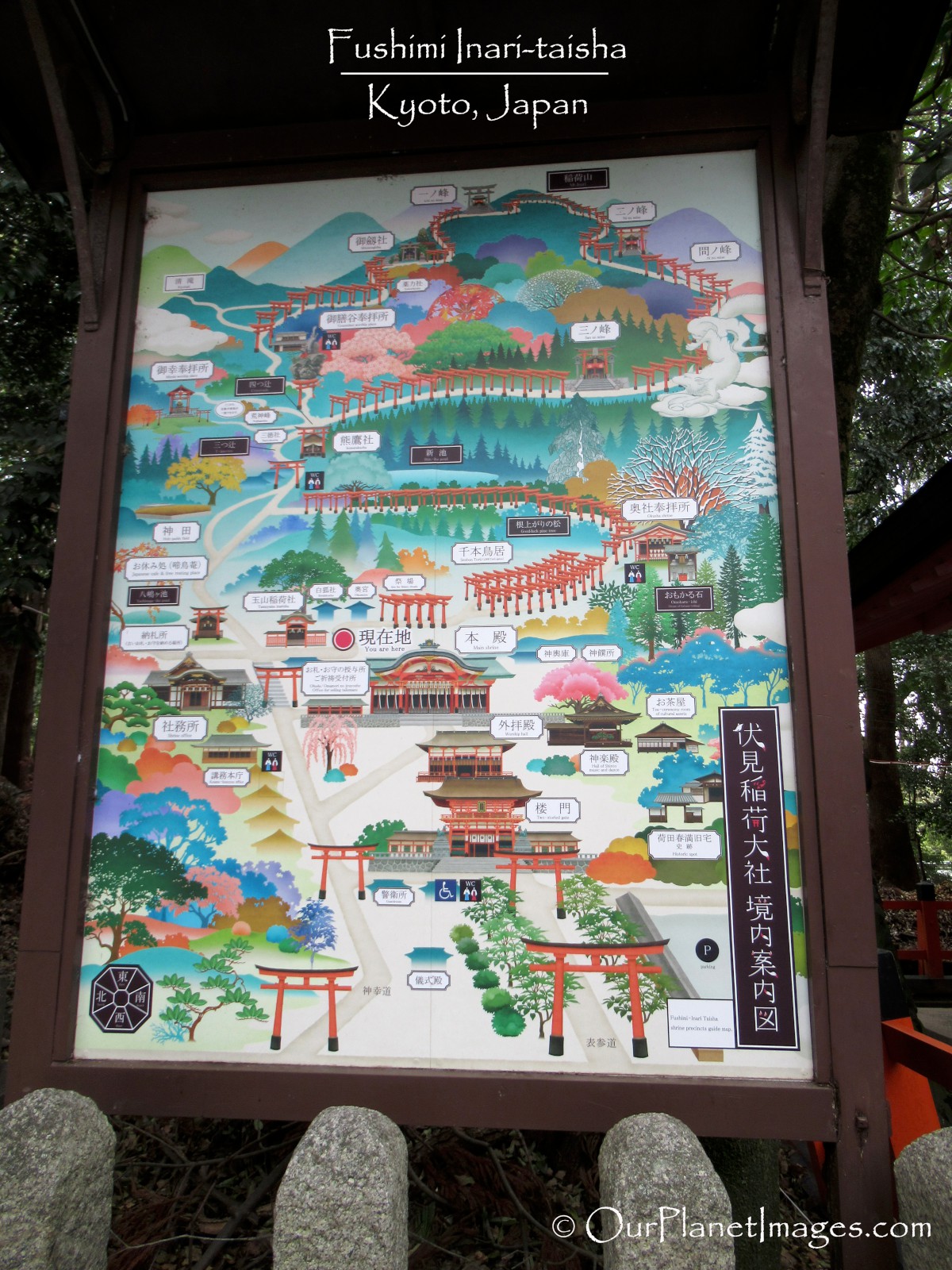
Entry Gate
Prior to reaching the entry gate of the shrine you will be greeted with a large tori gate that is just a sample of the great number of torii gates that is within the shrine complex.
The entry gate itself is two story and mostly vermilion with a stone fox on each side of the passage door. Just like the entrance torii gate, these stone foxes are just a sample of the stone foxes that are within the shrine complex.
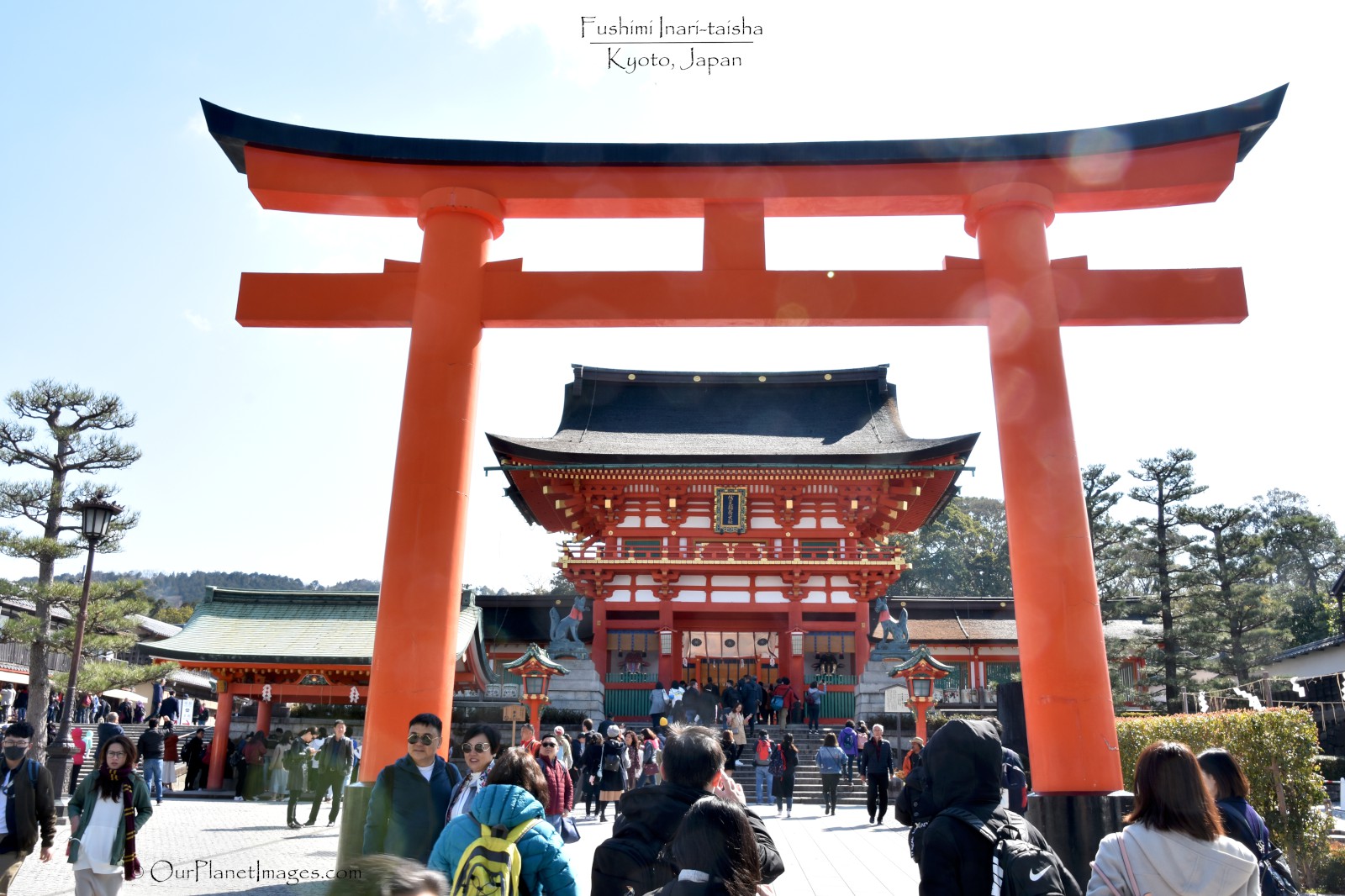
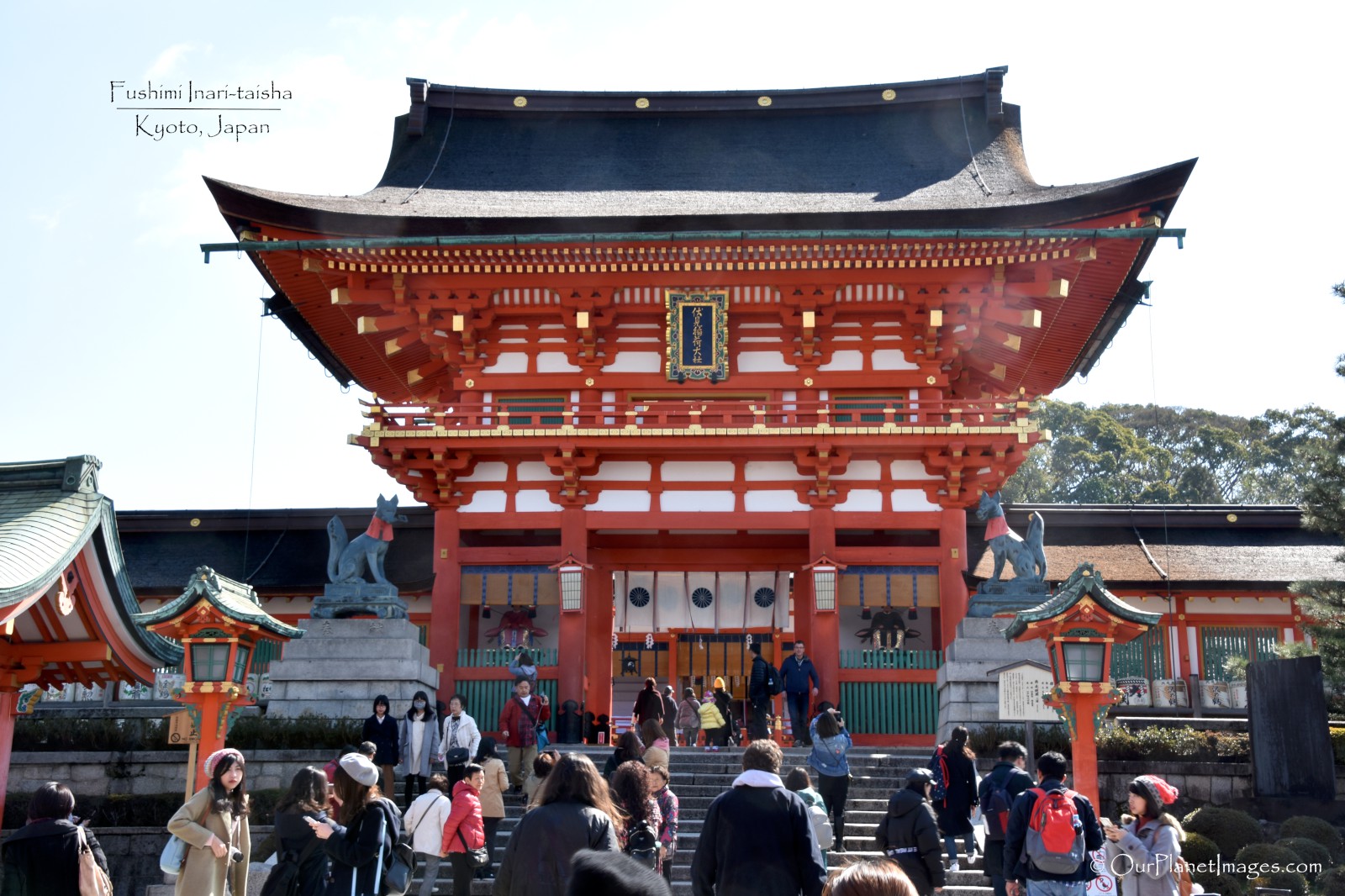
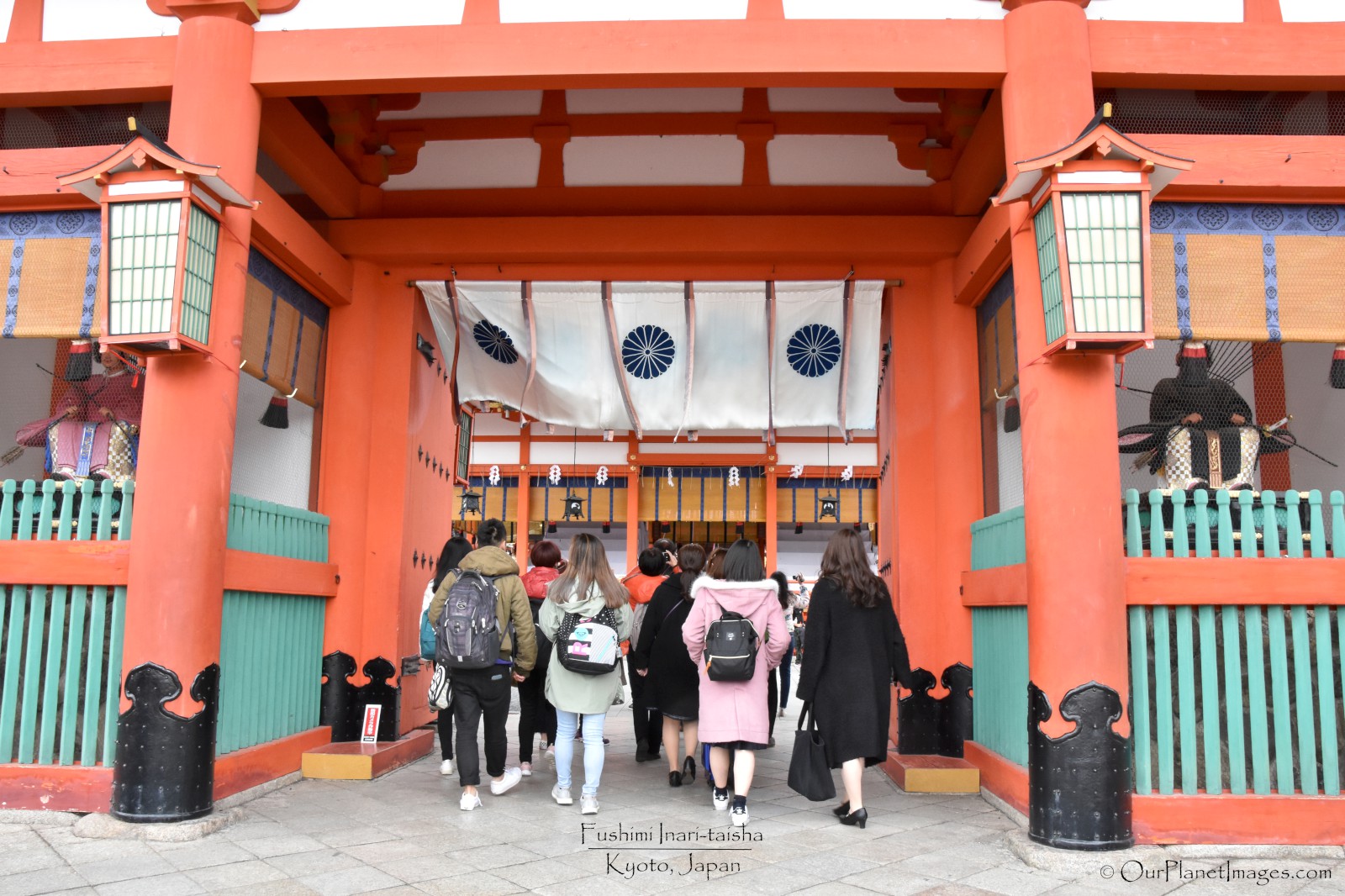
The back side of the entry gate is similar to the front but it has a covered area for people inside the complex.
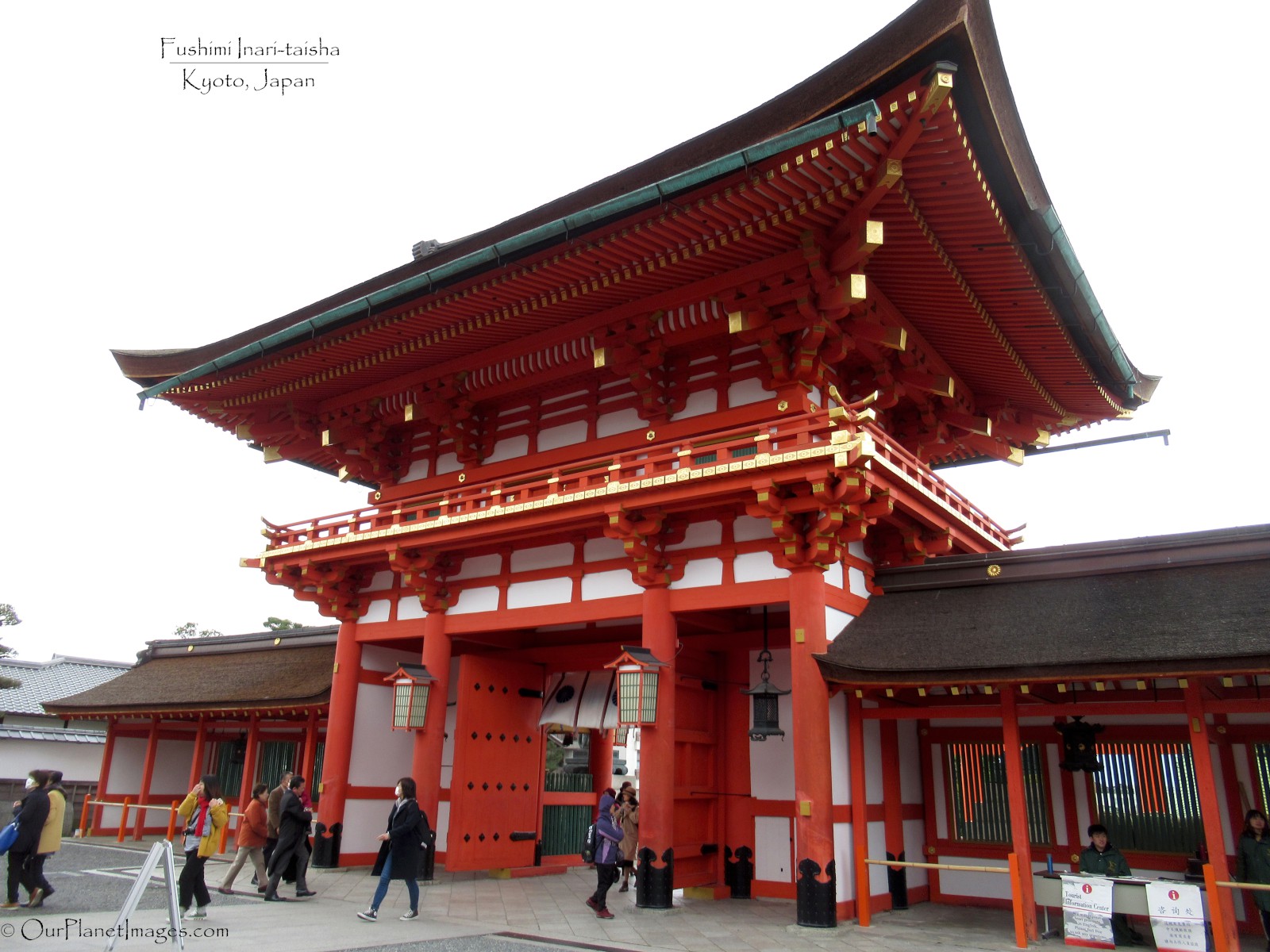
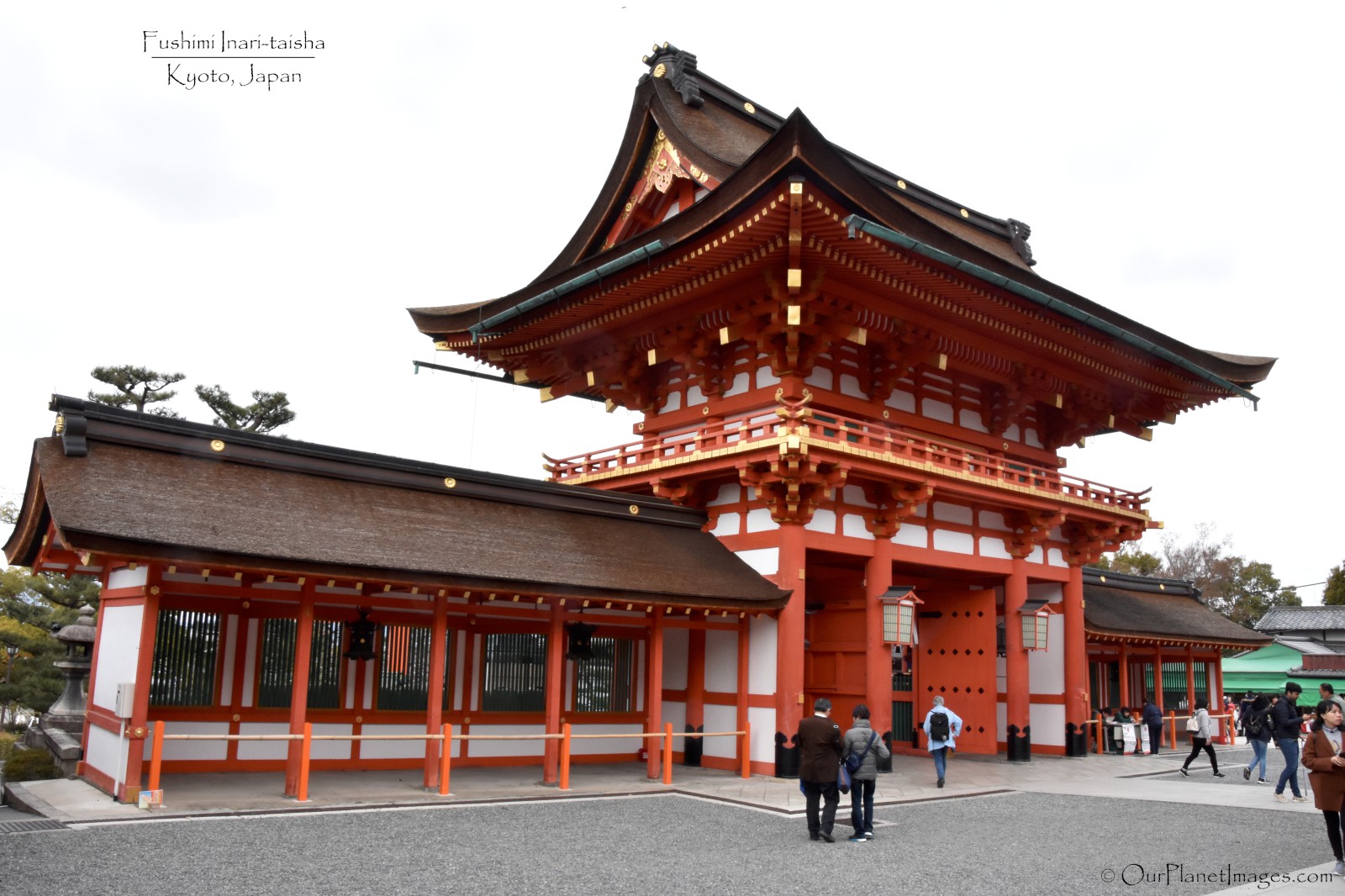
Worship Hall
The first building inside the entry gate is the Worship Hall. This is an active shrine and there were people worshiping at the time we were visiting.
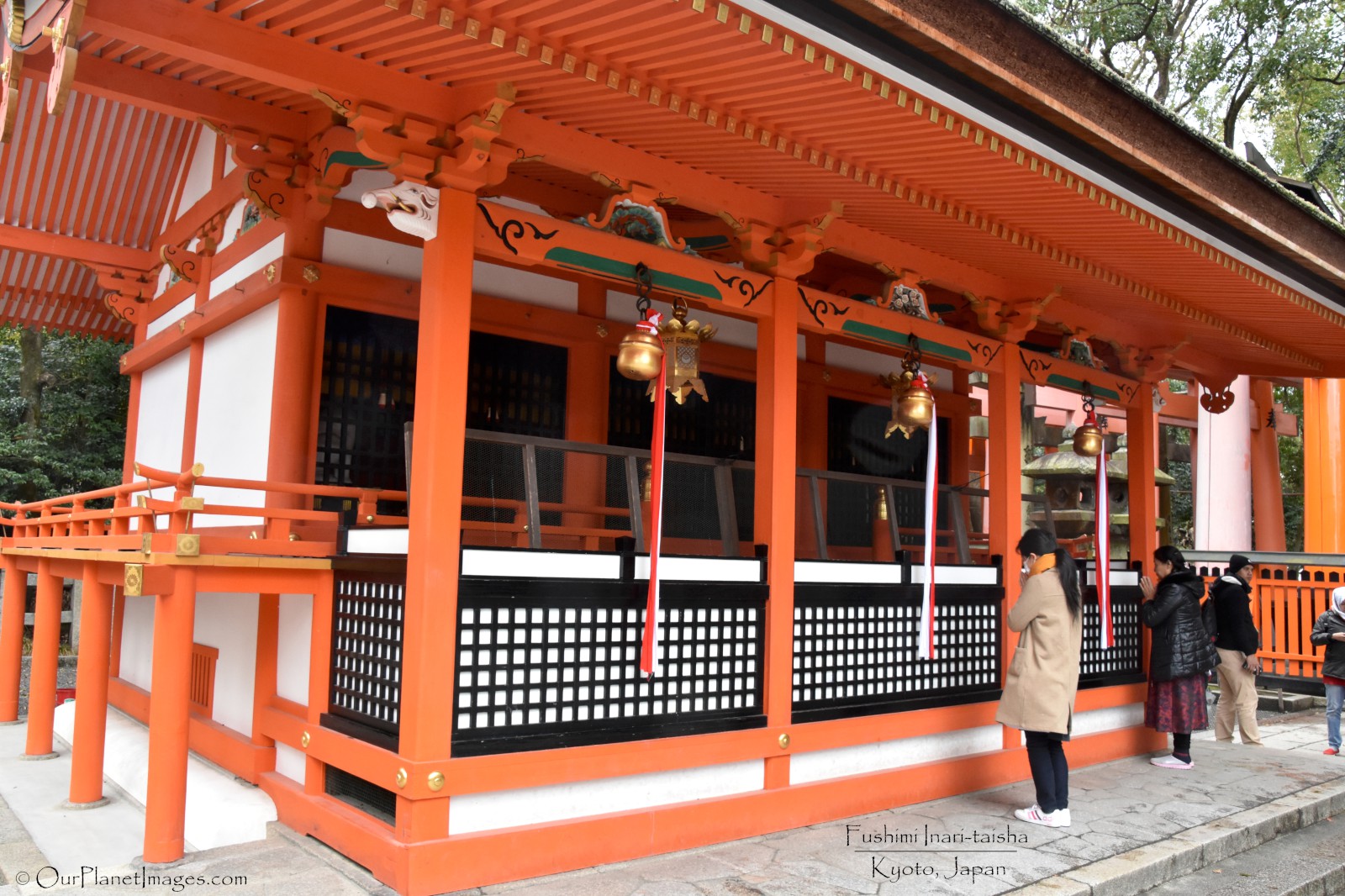

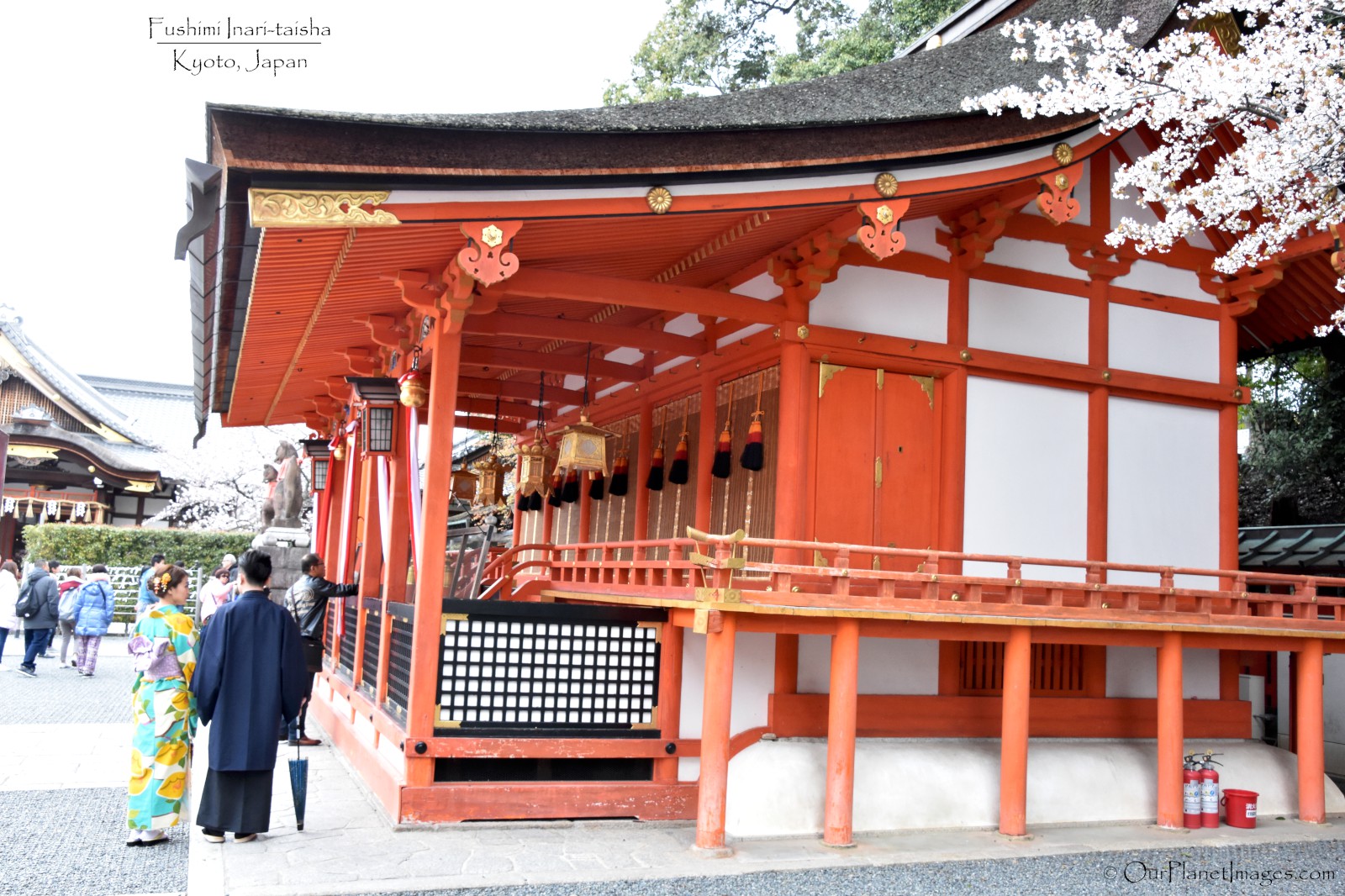
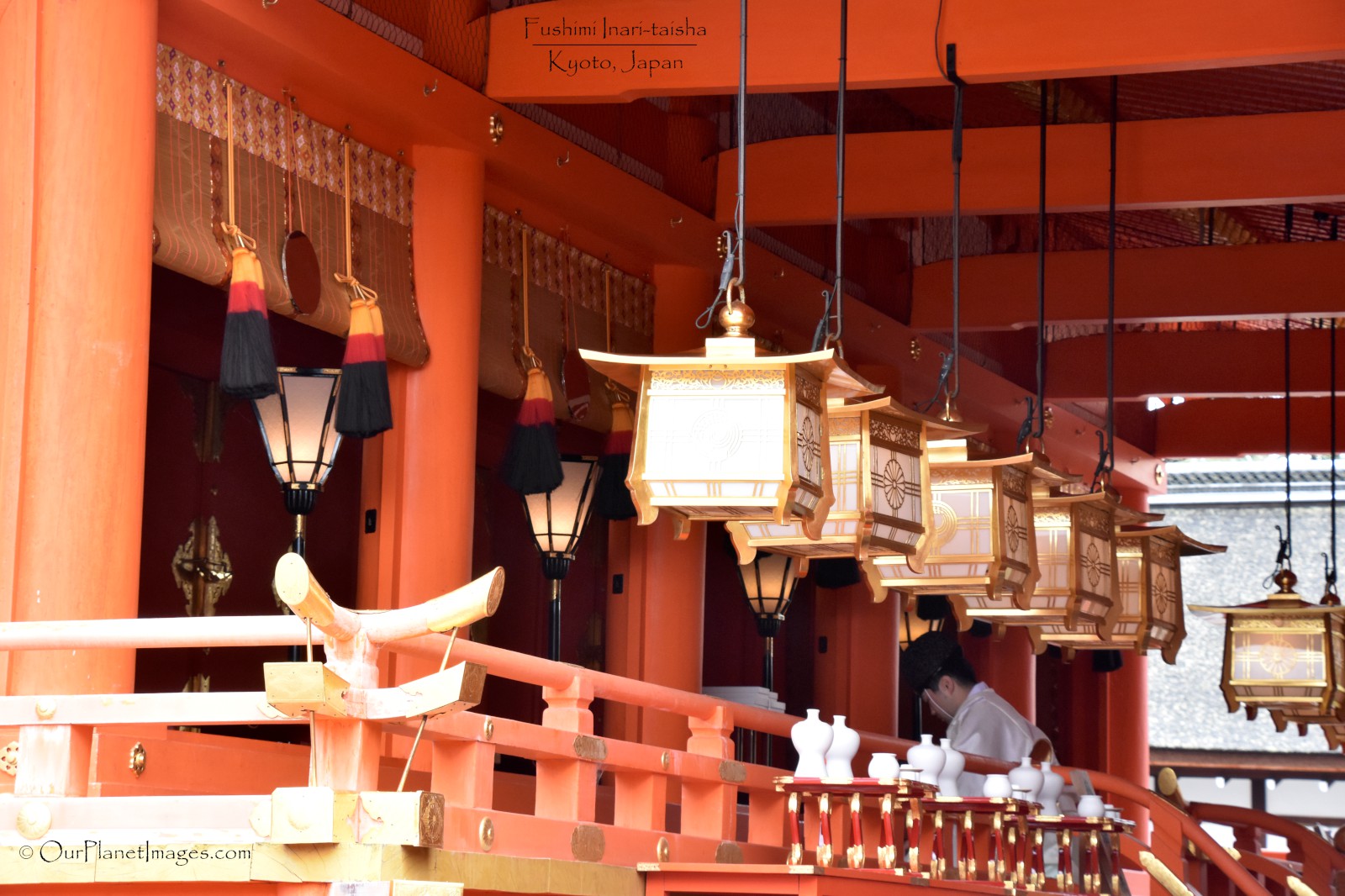

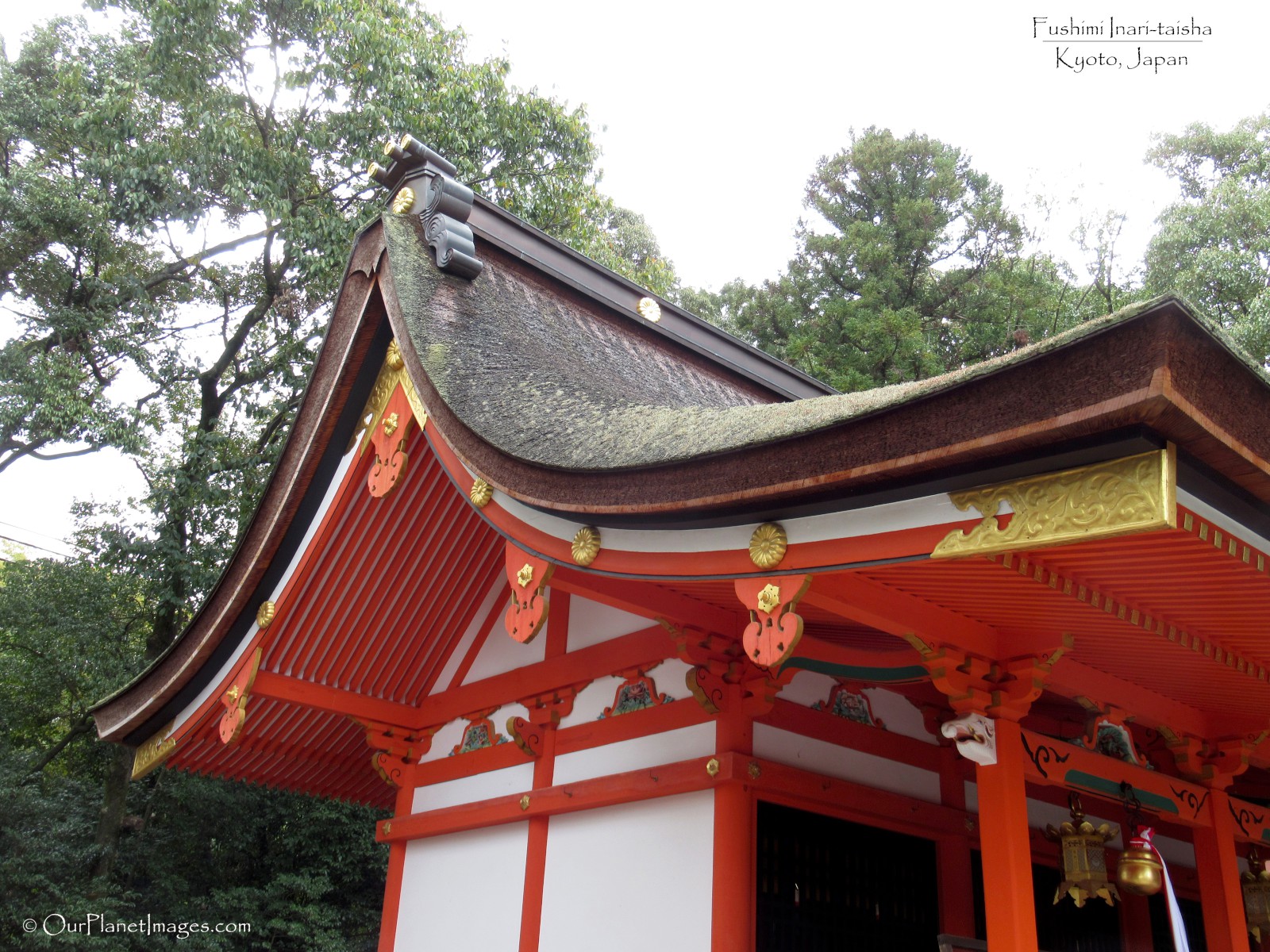
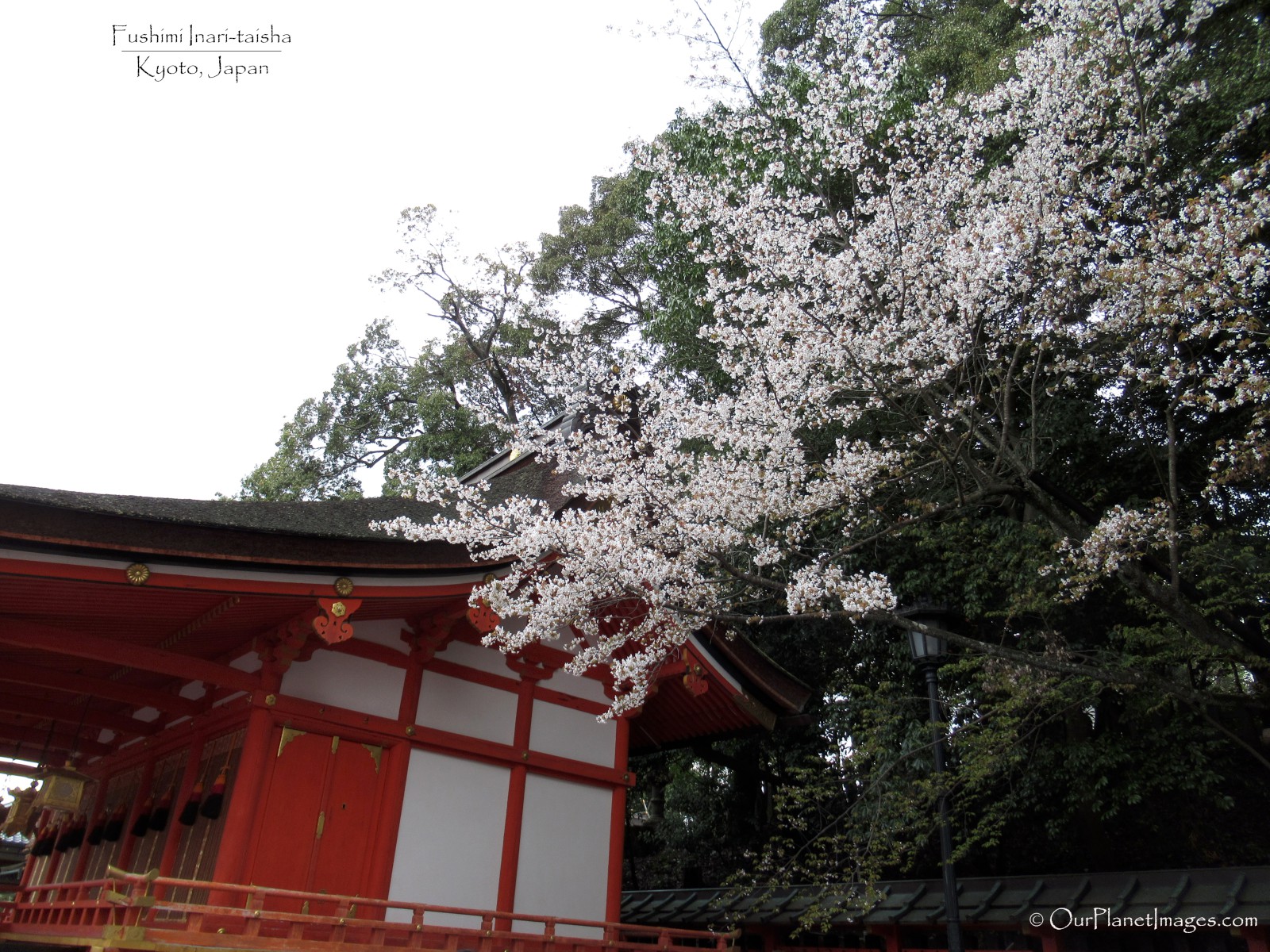
Main Shrine
The main shrine was the most impressive building in the complex and it was also the most popular building from the visitors in the shrine.

Other Buildings
There are several other buildings and structures within the complex. Some are obviously used for religious purposes and others I am not sure why they are used. An example of these are in the photos below.
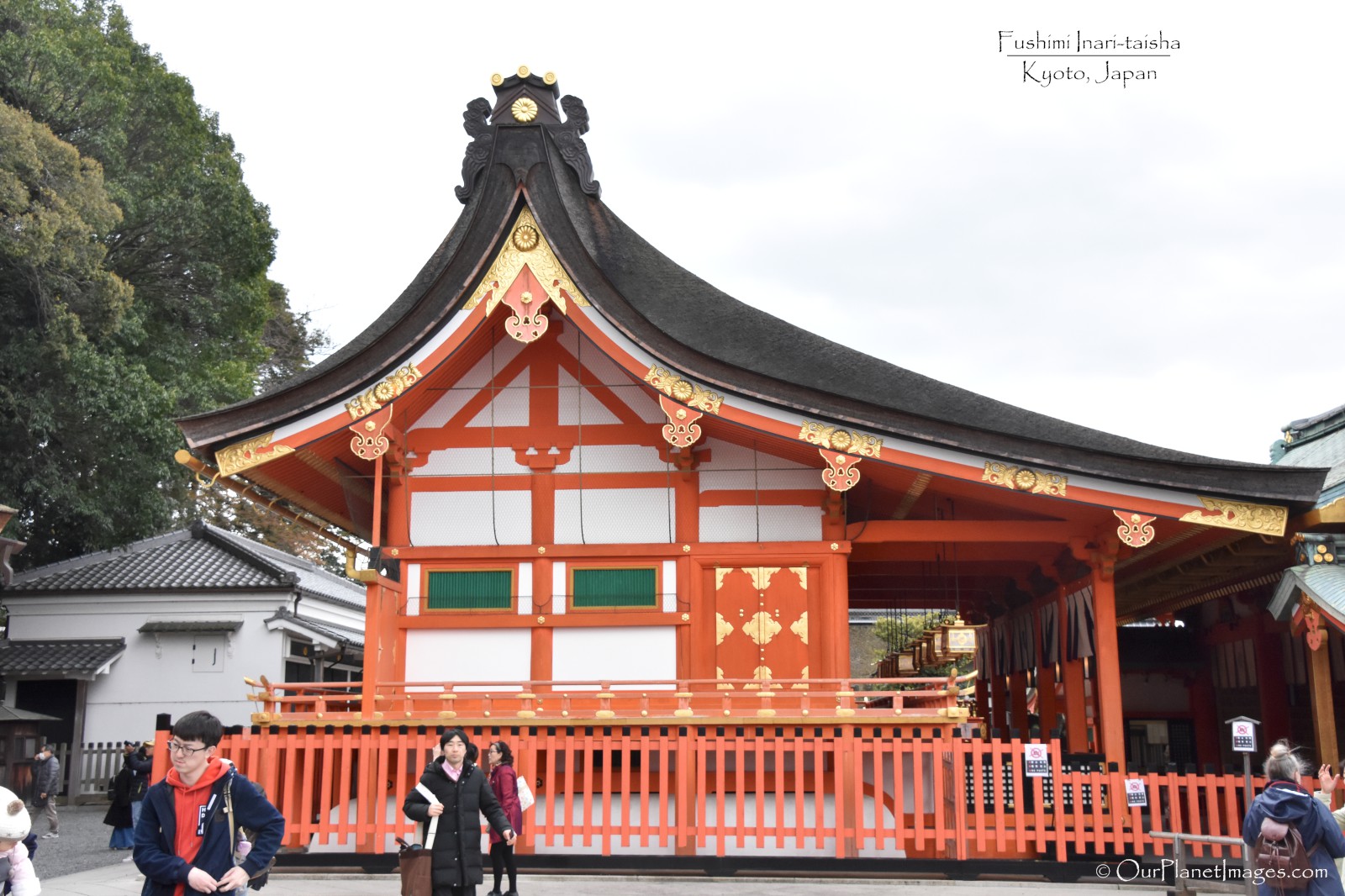
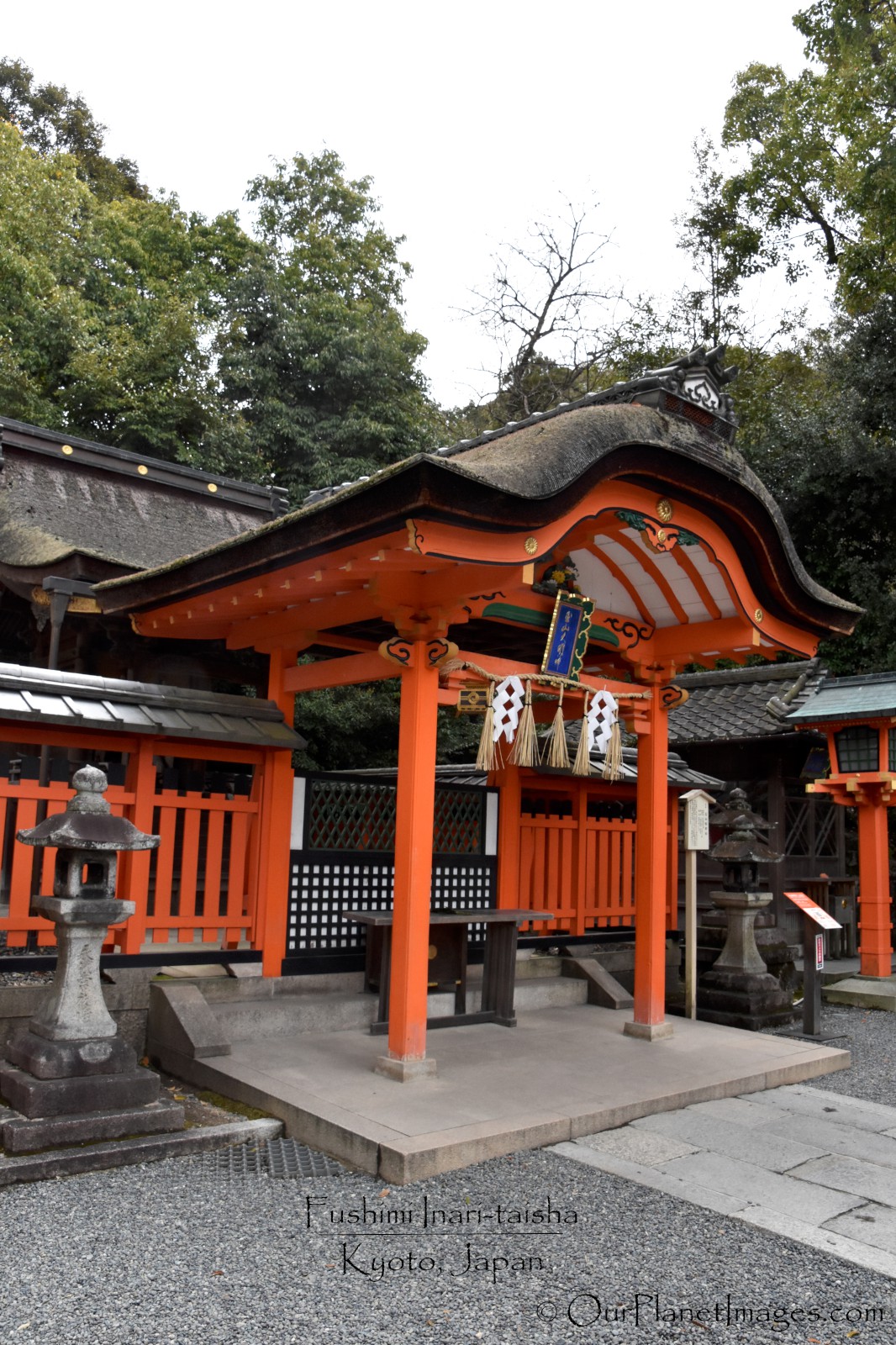
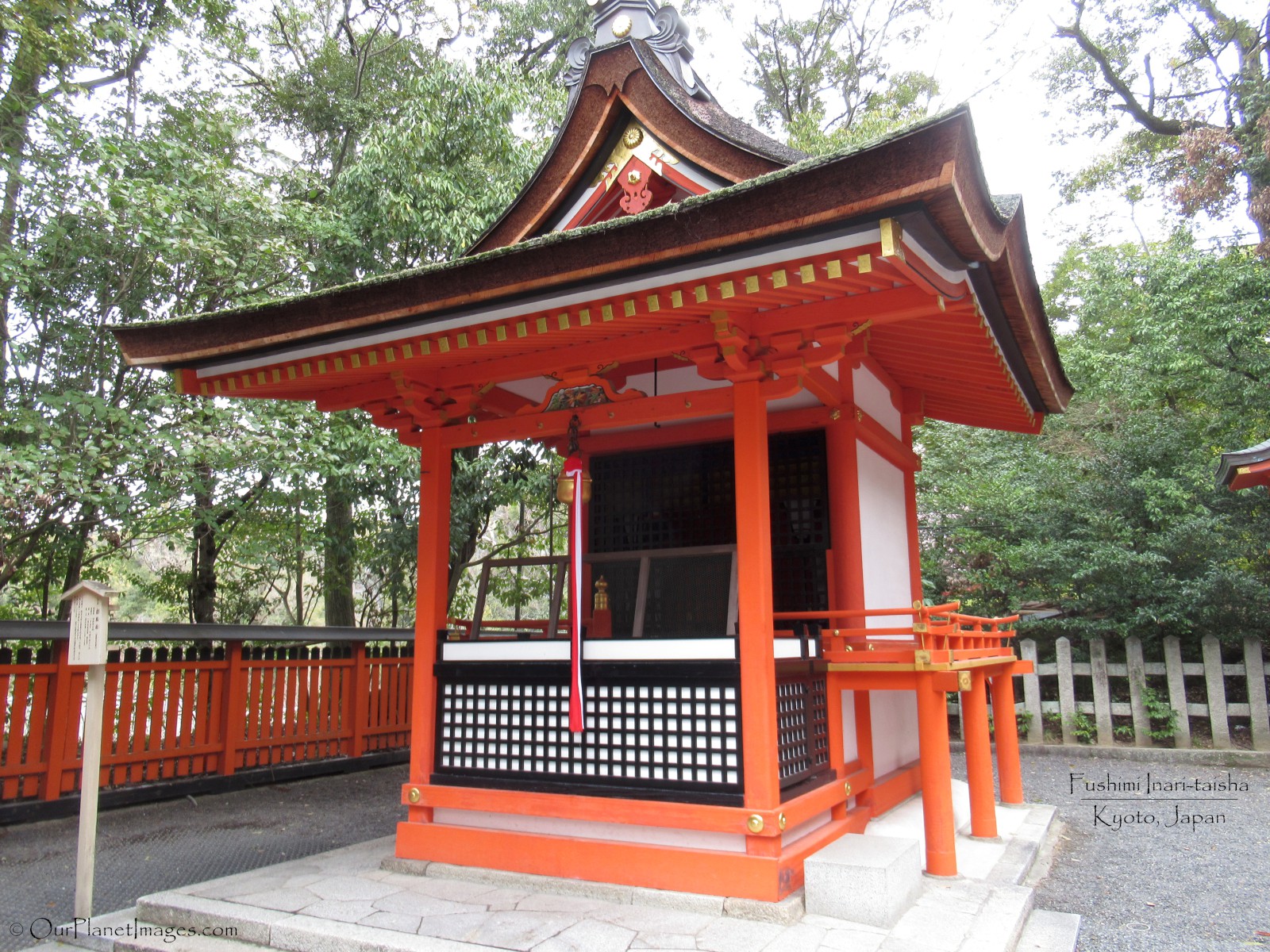
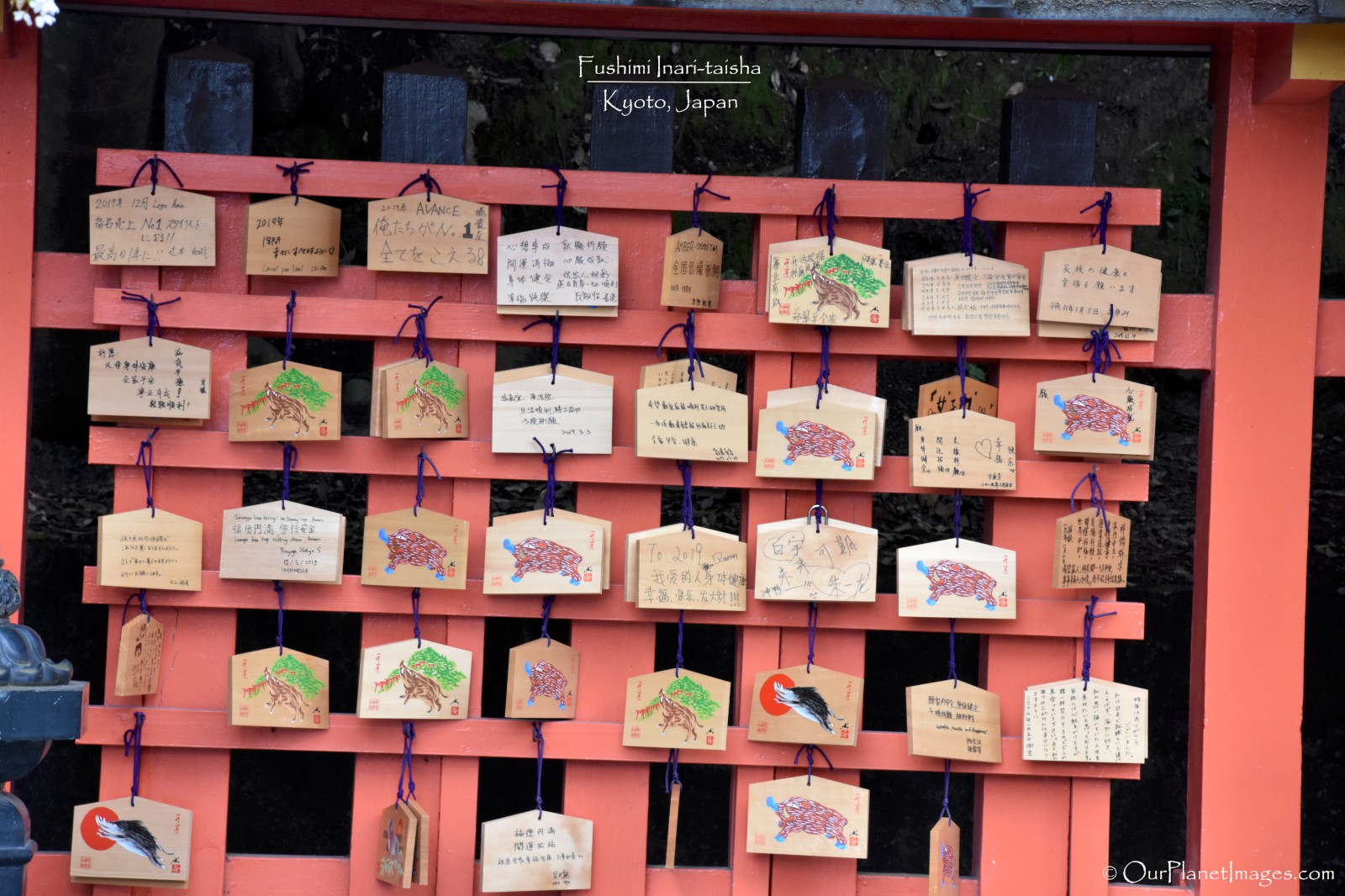

Building Details
I am always amazed by the all of the small details that are part of ancient complexes like the Fushimi Inari-taisha Shrine. A few examples of these at the Fushimi Inari-taisha Shrine are shown in the photos below.
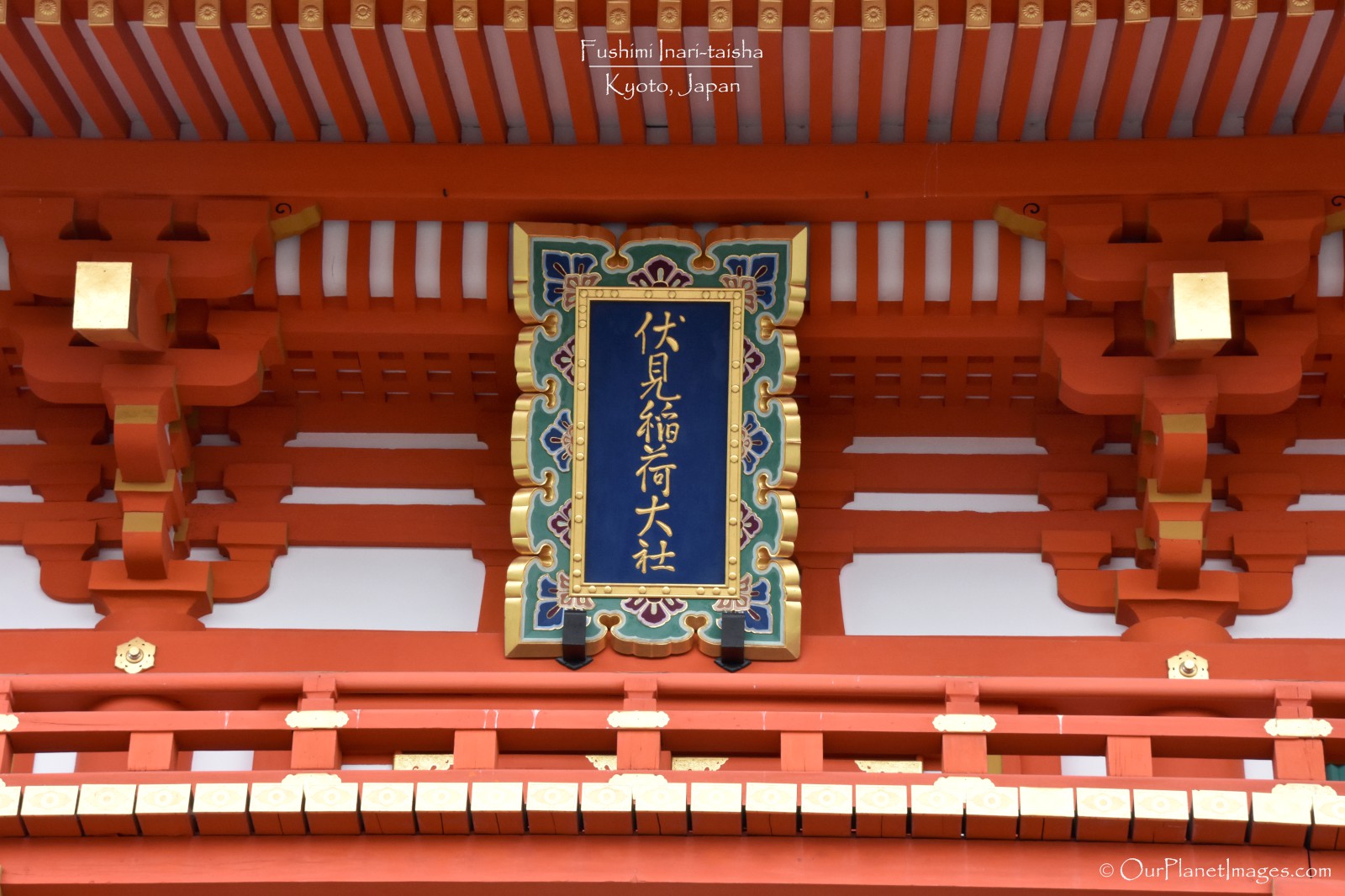
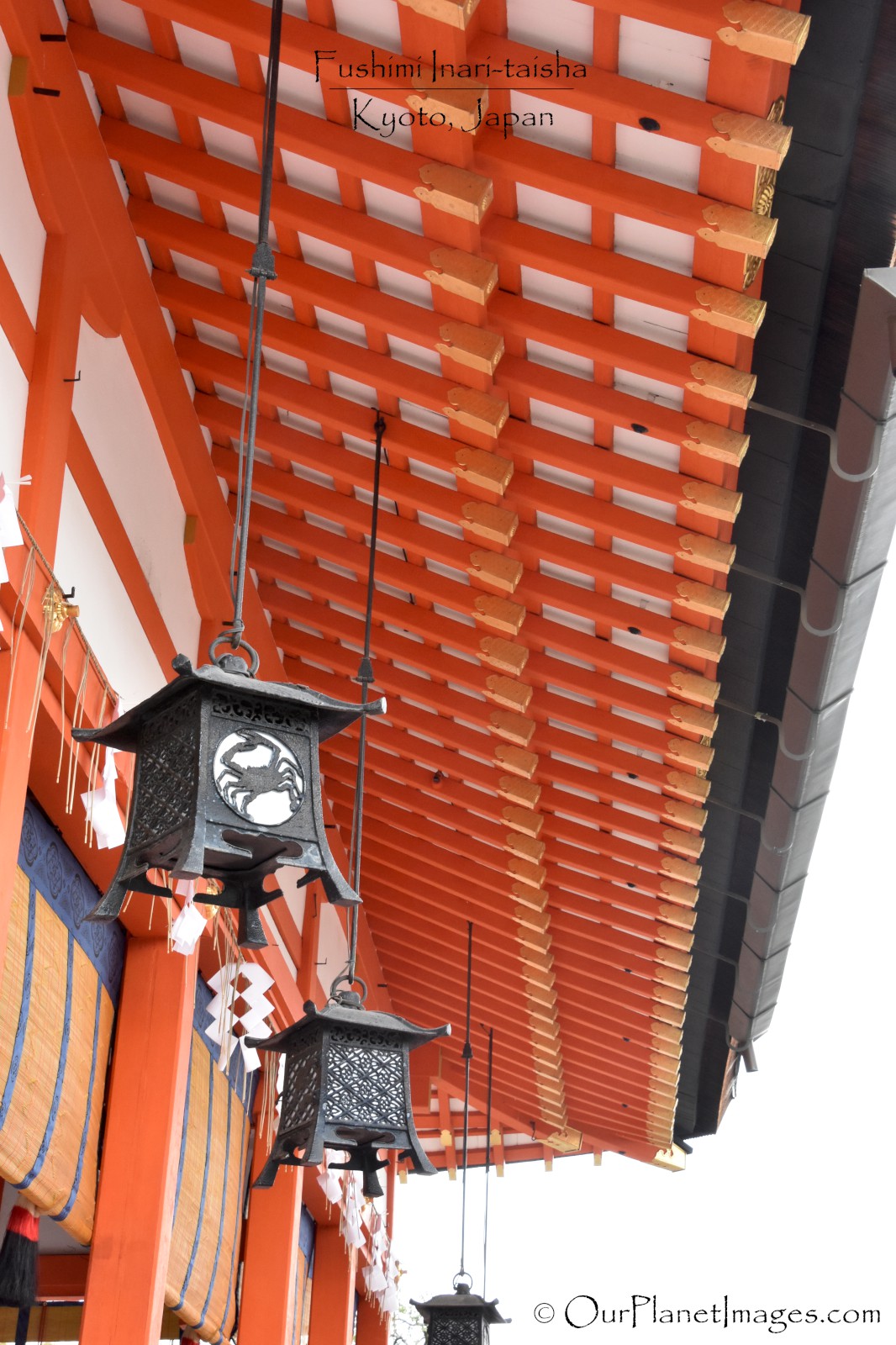
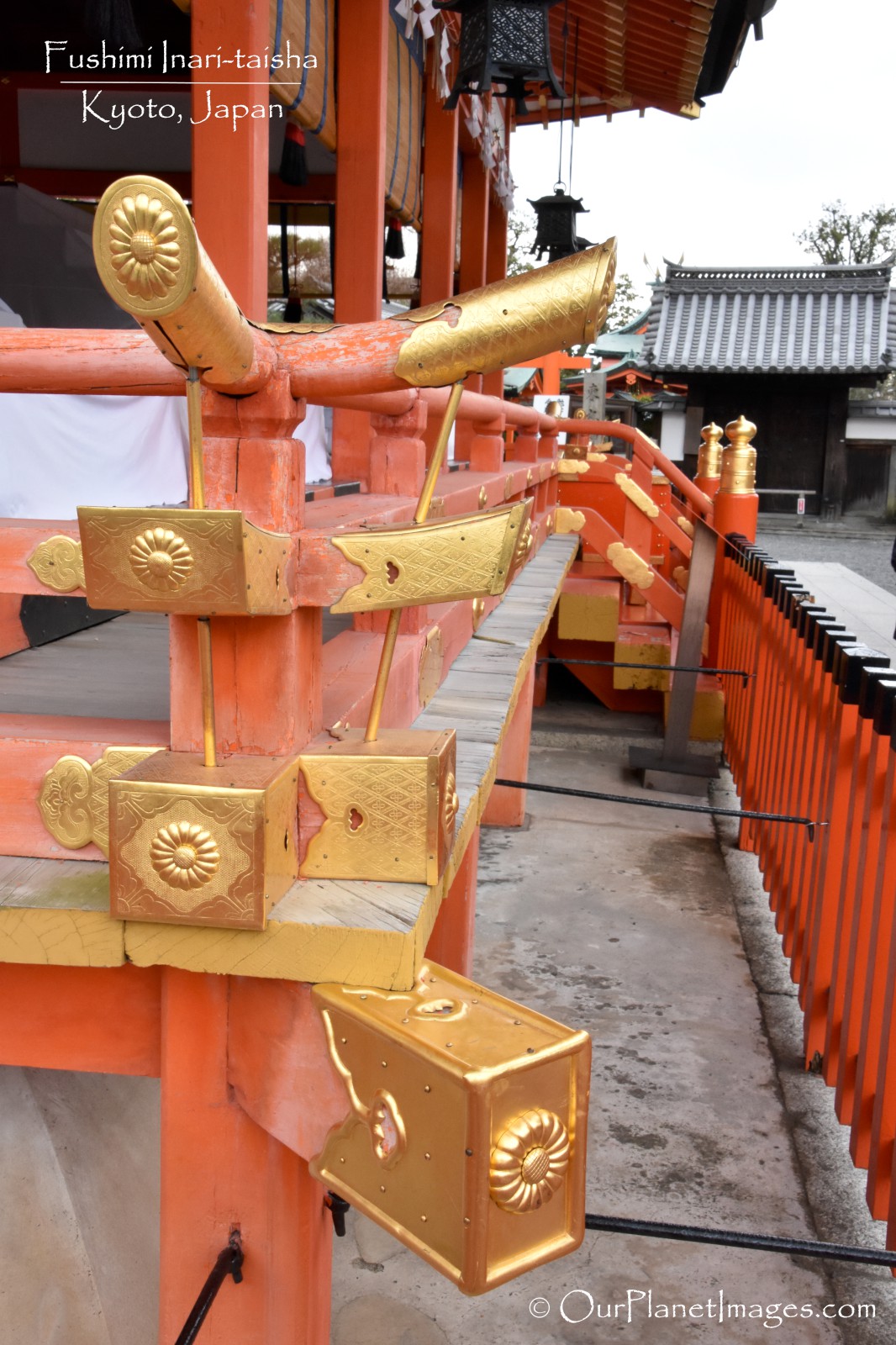

Stone Foxes
I mentioned earlier that there are many stone foxes in the complex and there are hundreds of them that can be seen primarily in the memorial area. Japanese traditionally see the fox as a sacred figure. The foxes are considered the messengers of Inari (the god of rice). The fox often has a key in its mouth that is the key to the rice granary.
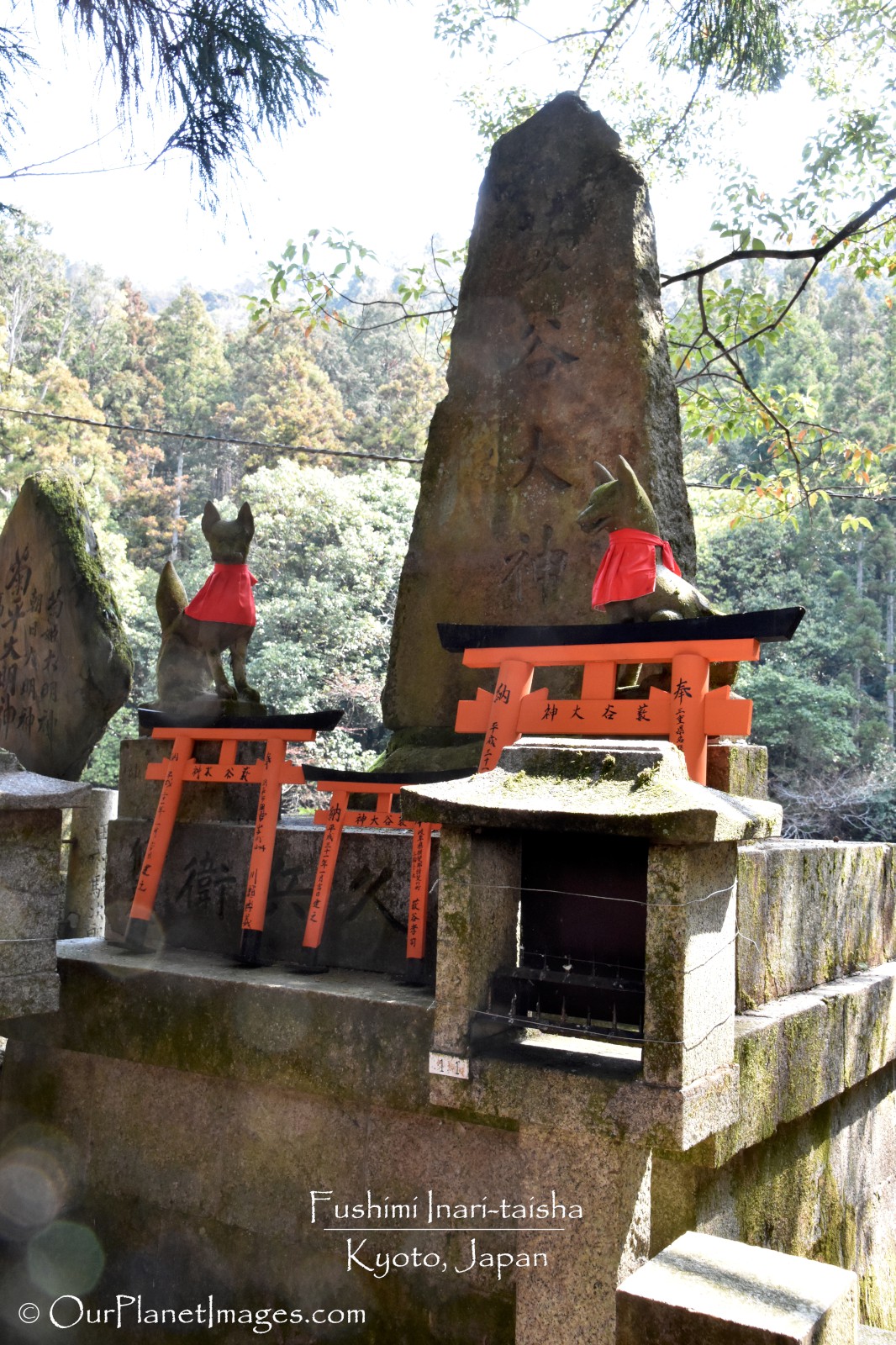
Torii Gates
The hills behind Fushimi Inari-taisha Shrine is lined with over 5000 vibrant orange tori gates that wind along the pathway. This exhibition of torii gates is one of the most impressive and memorable sights of my trip to Japan.
It is really hard to describe the feeling that comes from walking through so many large brightly colored gates that are set on the hillside in nature. It is an overwhelming sight that seems misplaced.
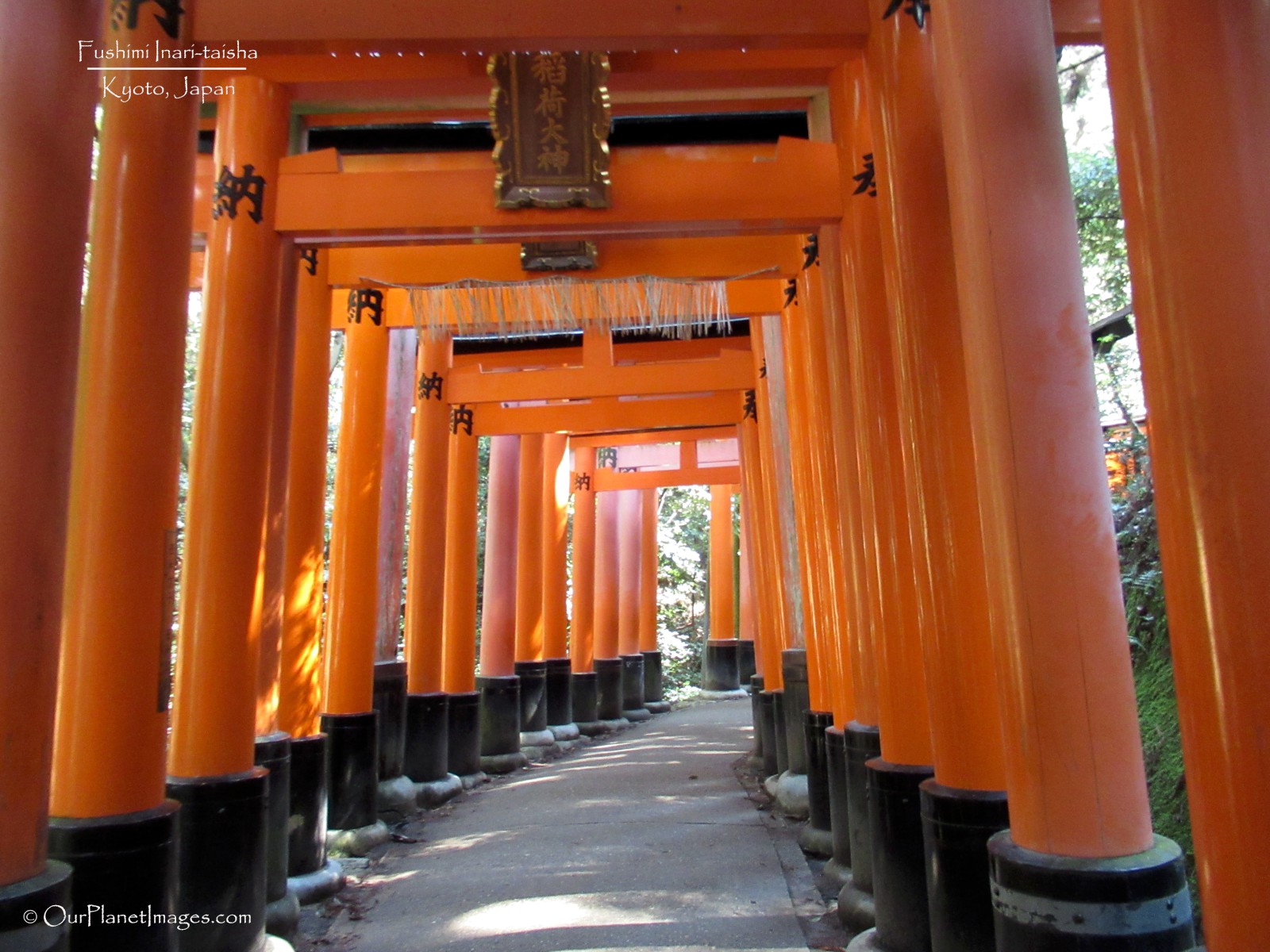
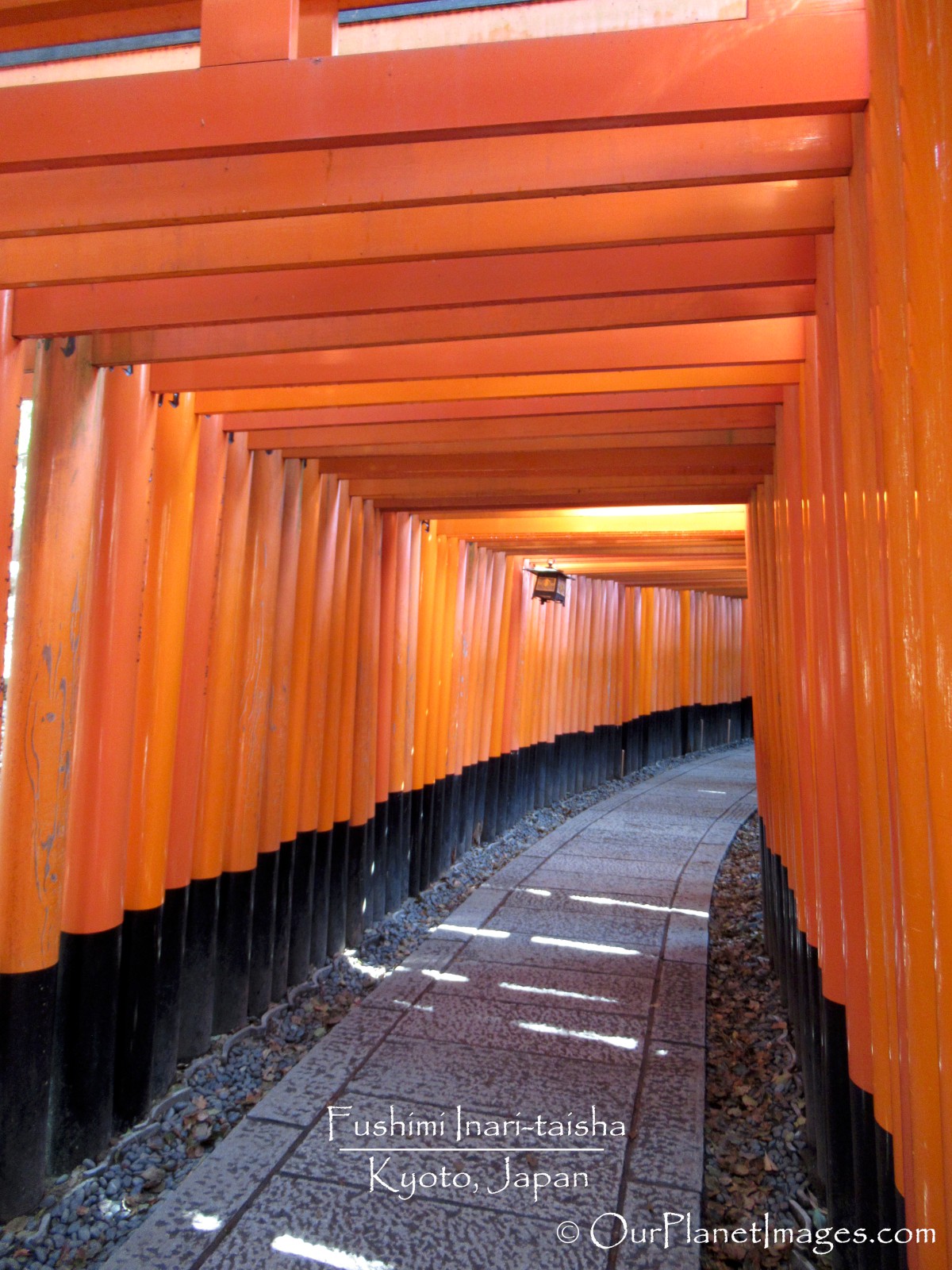
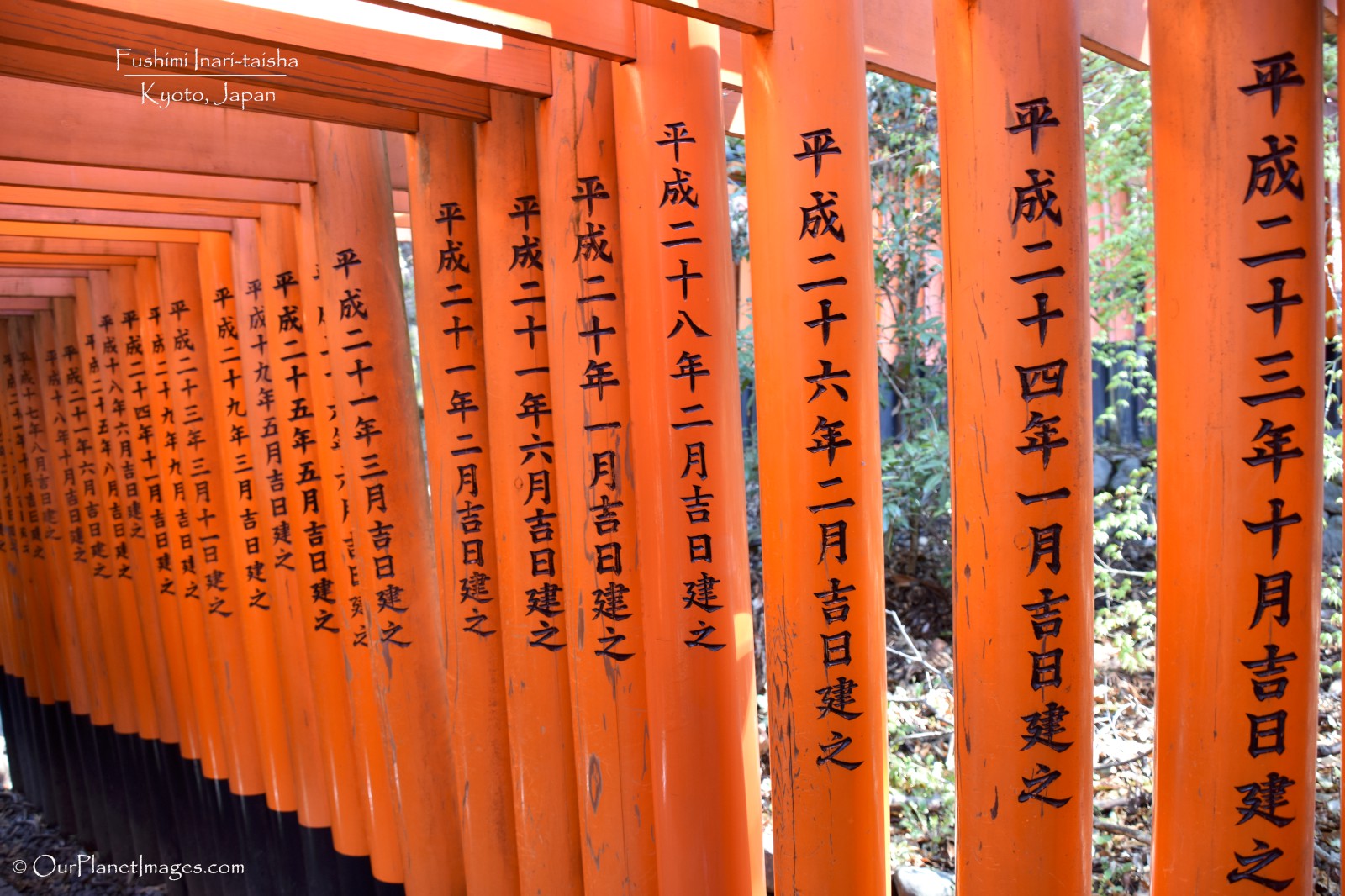

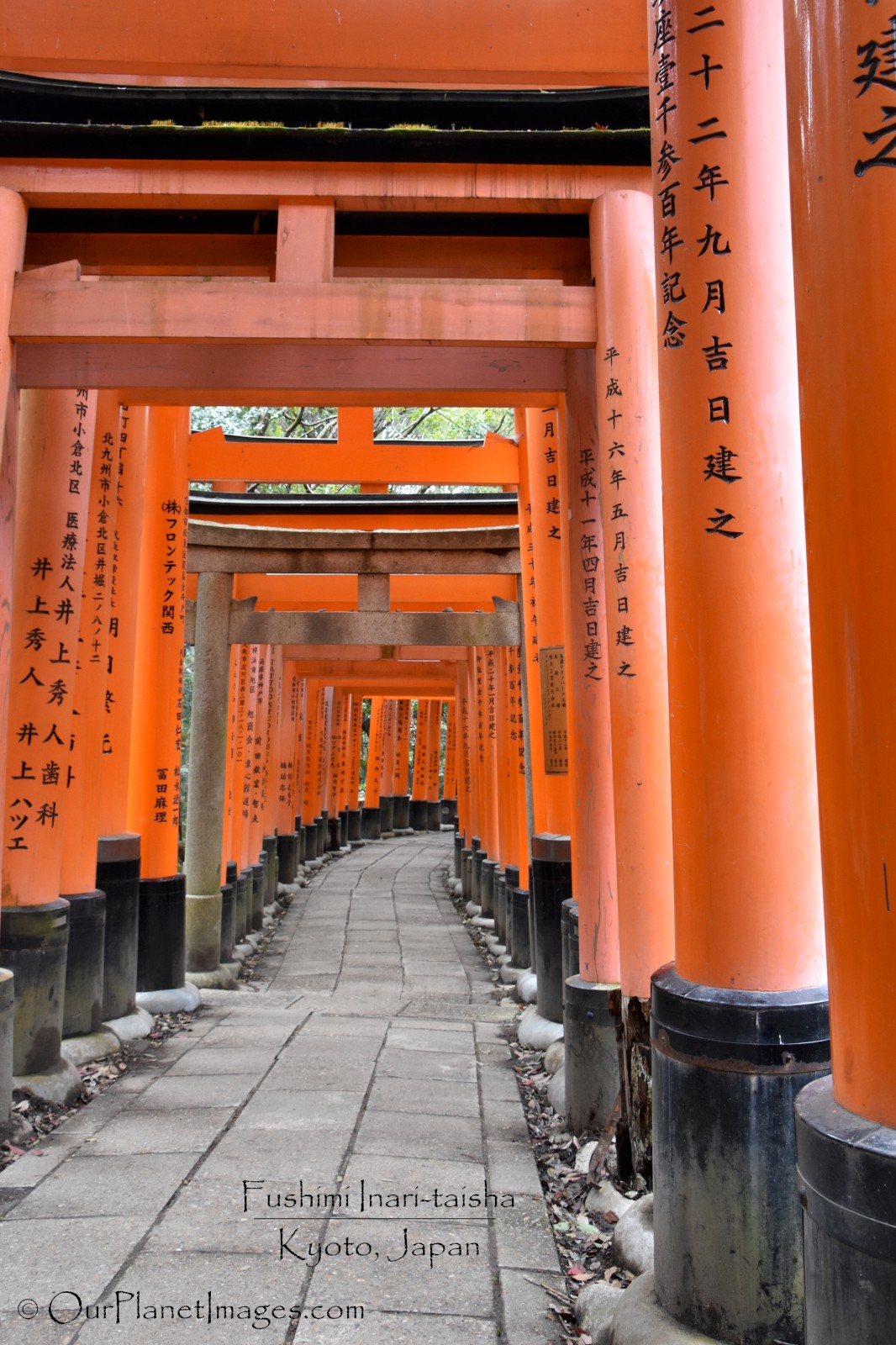
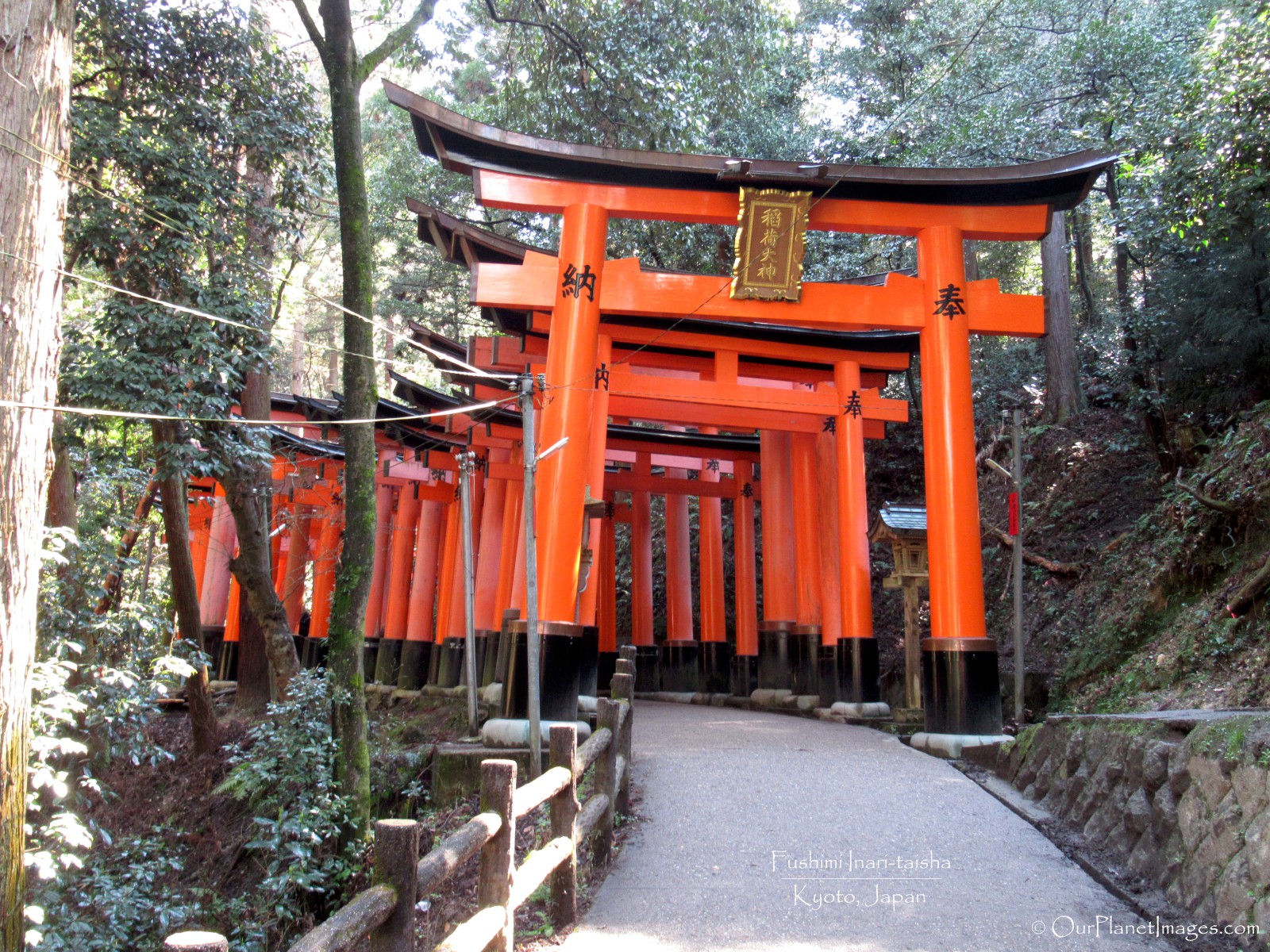
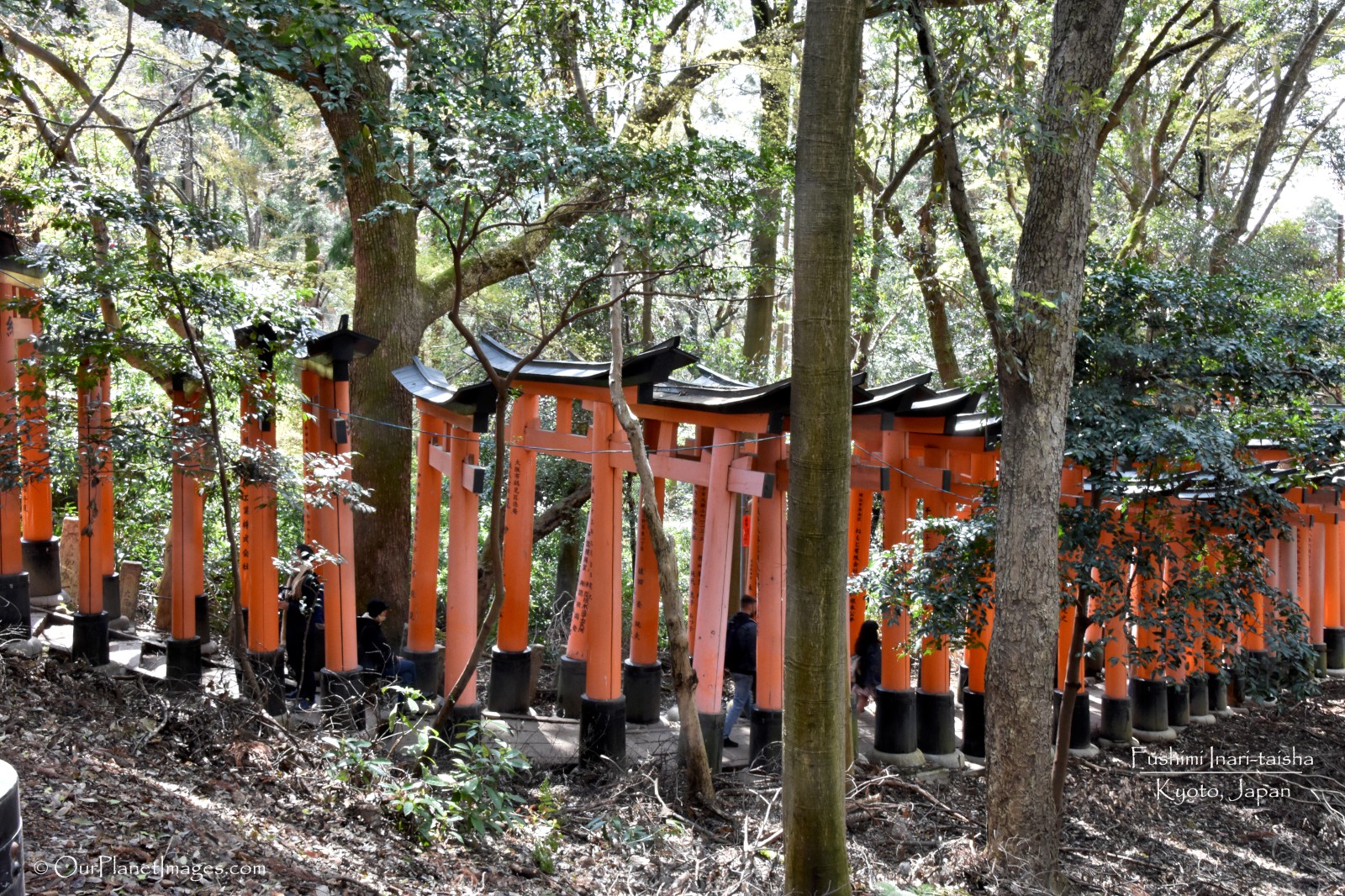
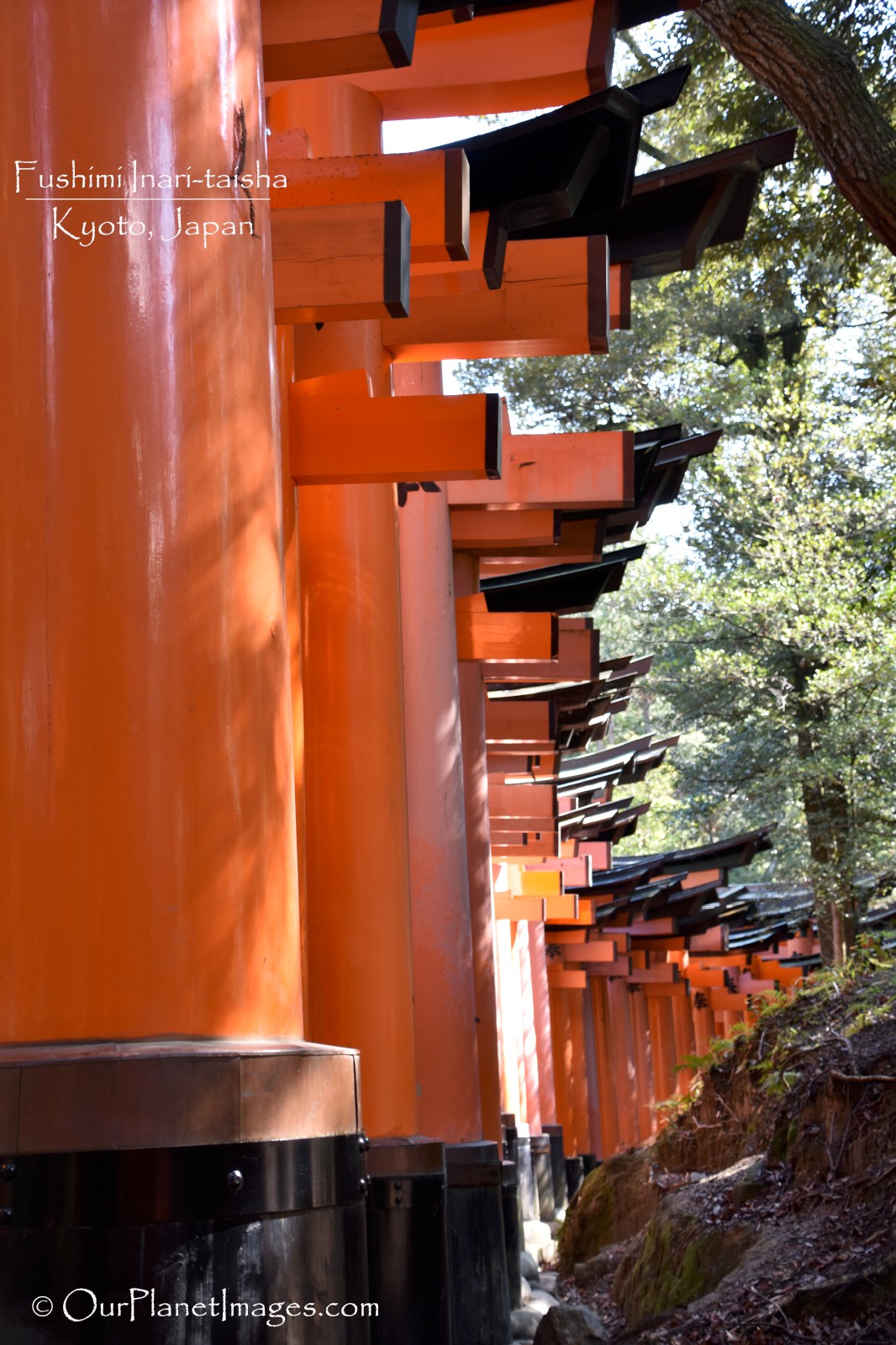
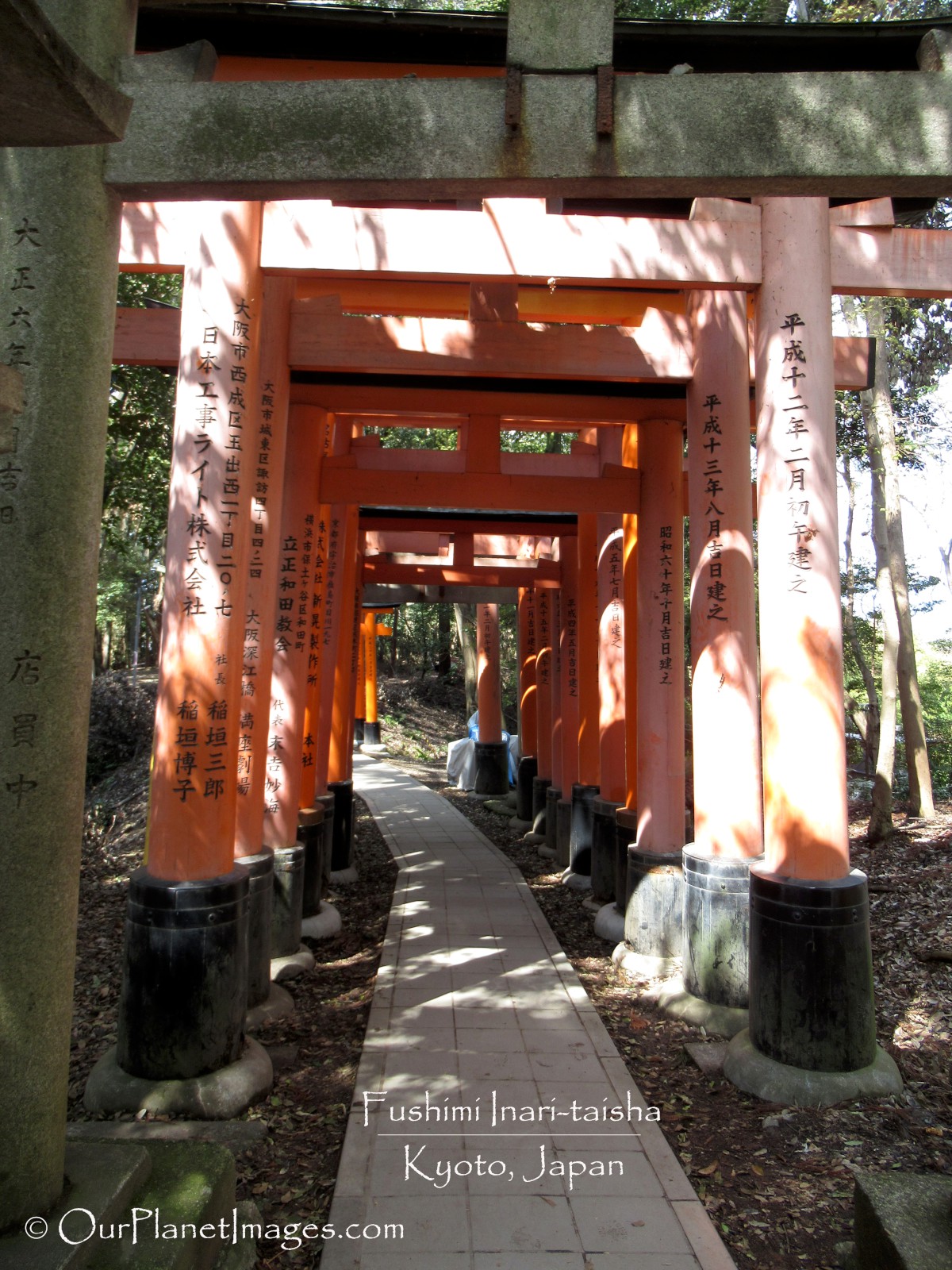
Memorials
My biggest surprise of visiting the shrine were the countless memorials with smaller torii gates stacked at the memorial. The location of these memorials were a place where a feeling of reverence instantly came upon me as I approached them. There is a mood of honor and respect that is different from any other place that I have visited.
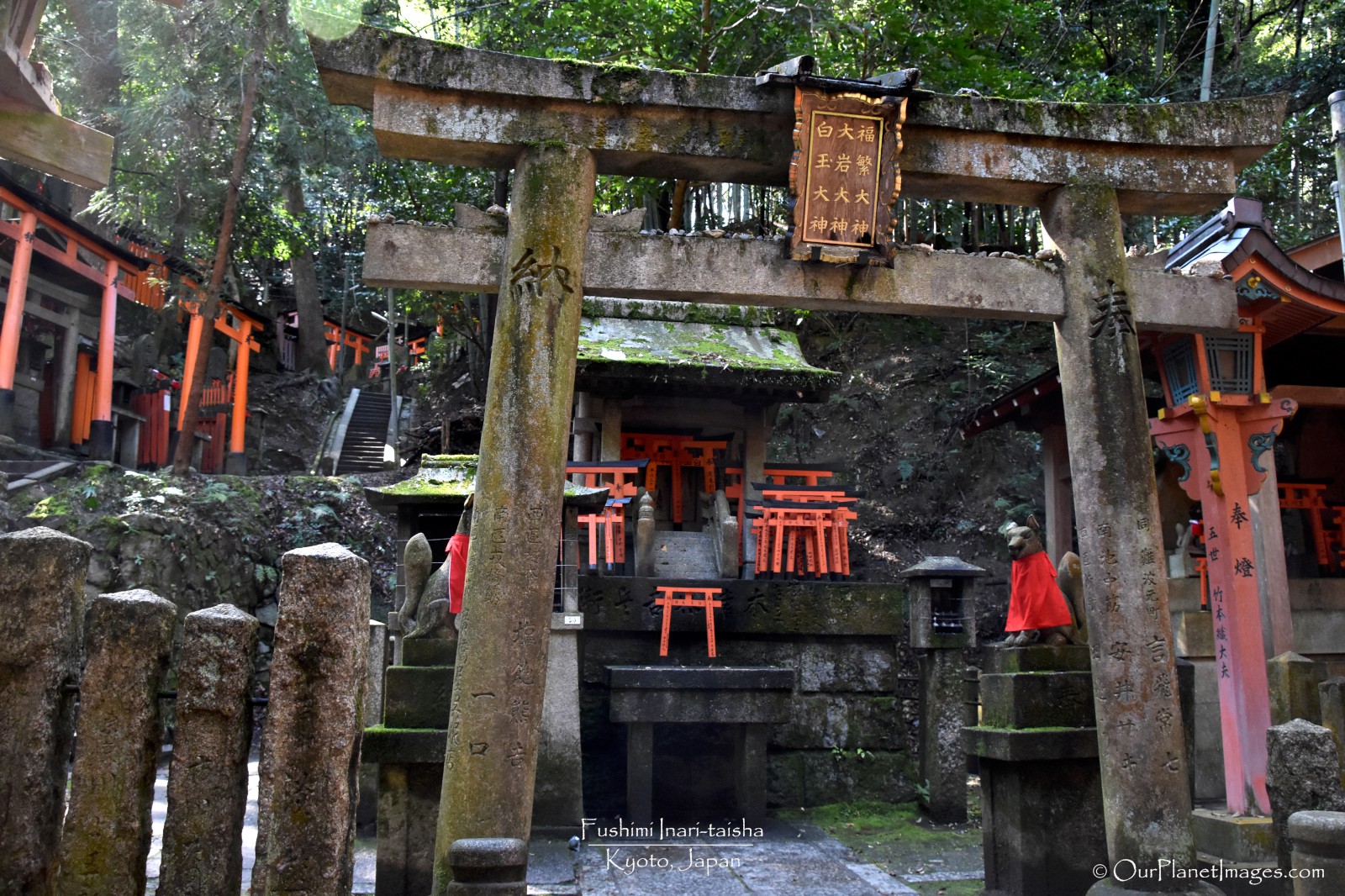
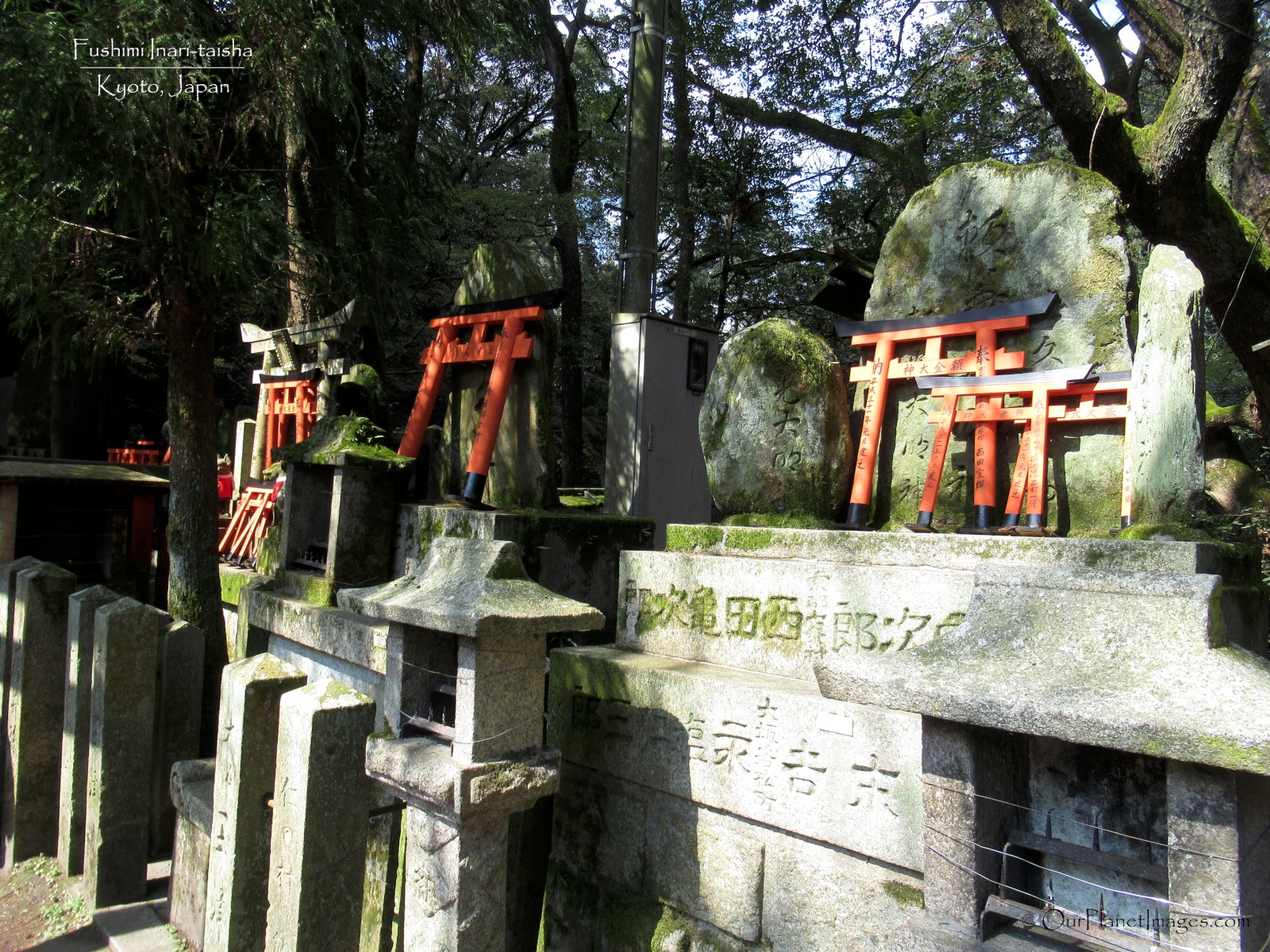
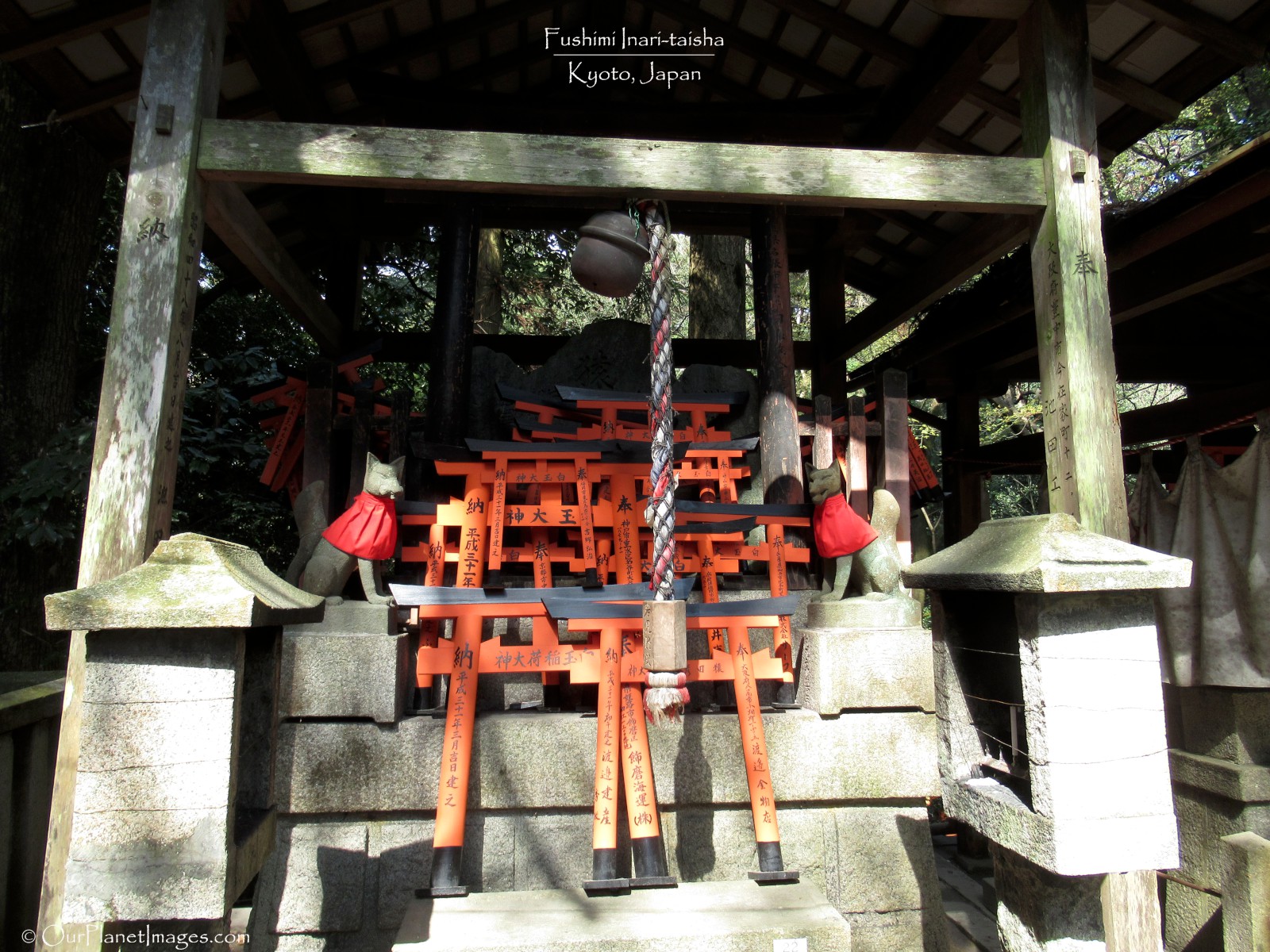
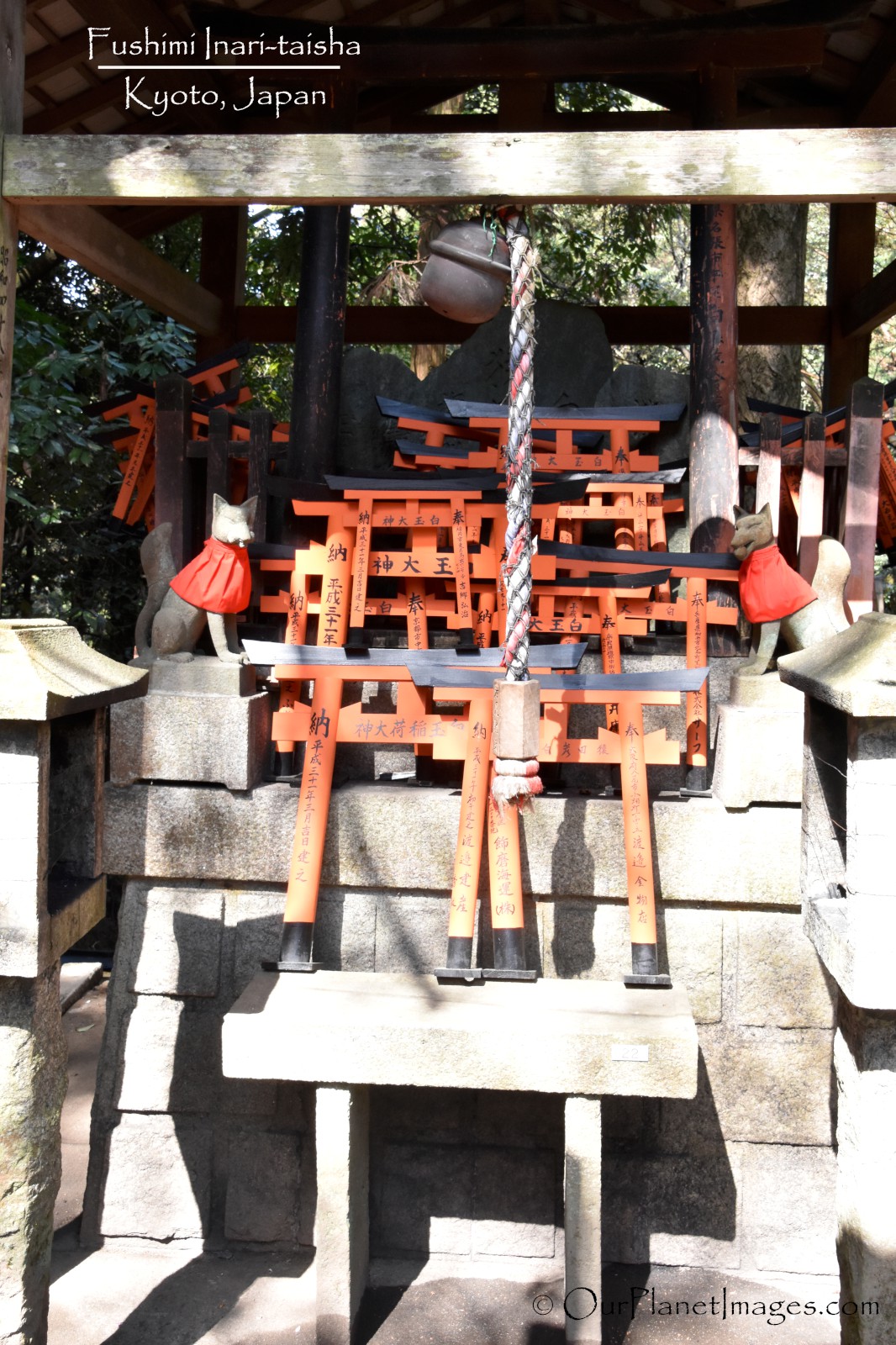
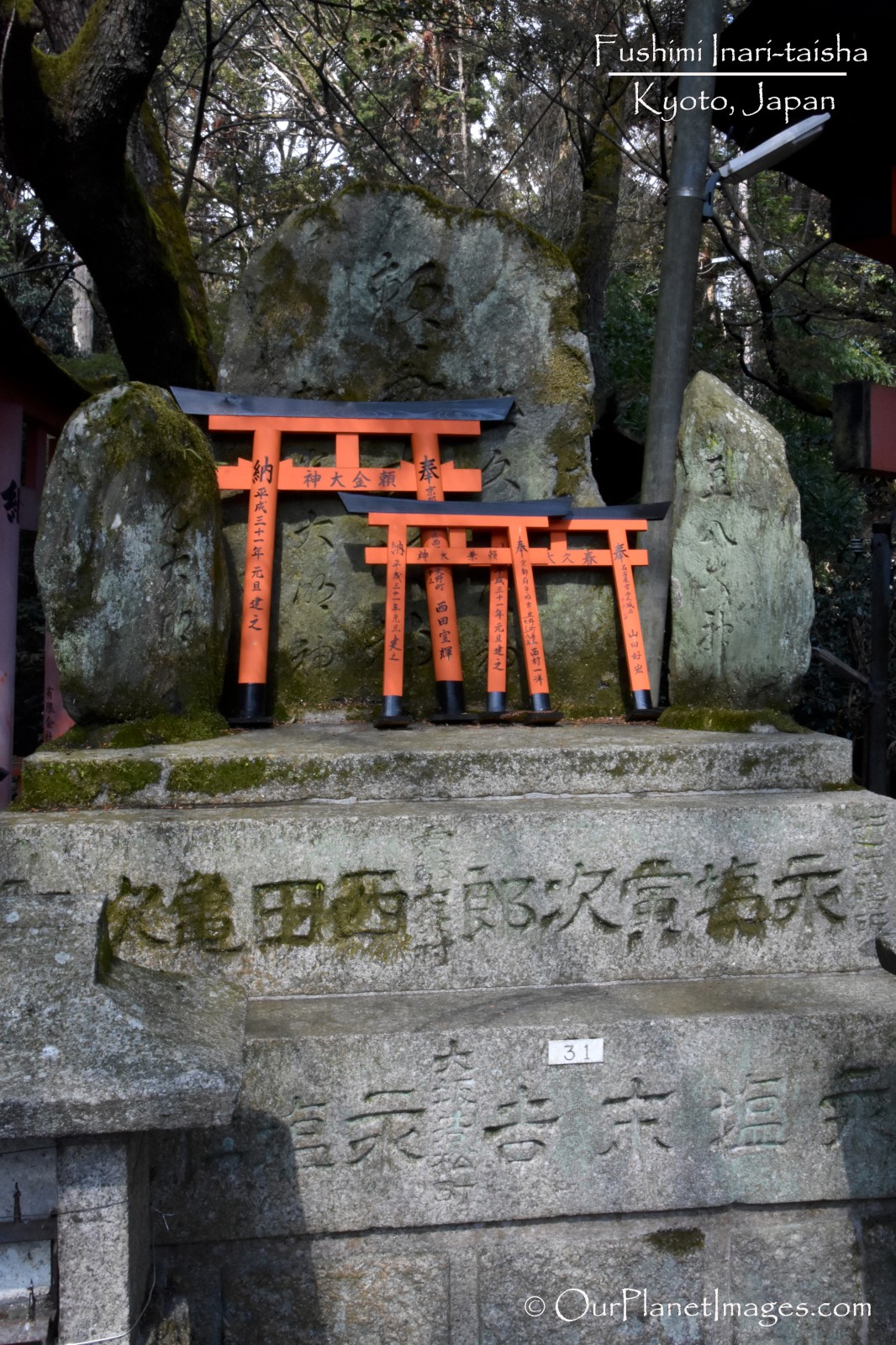
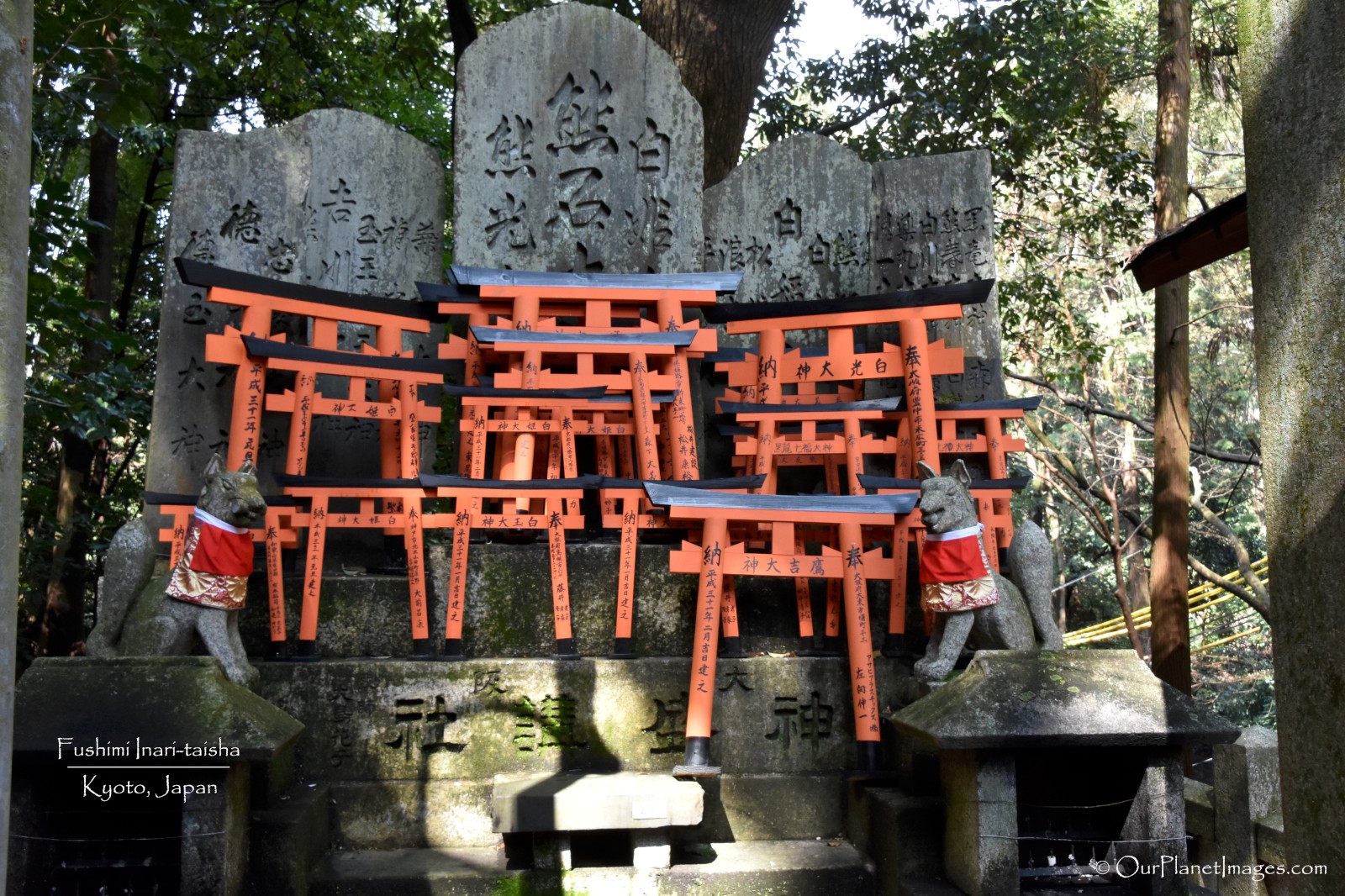
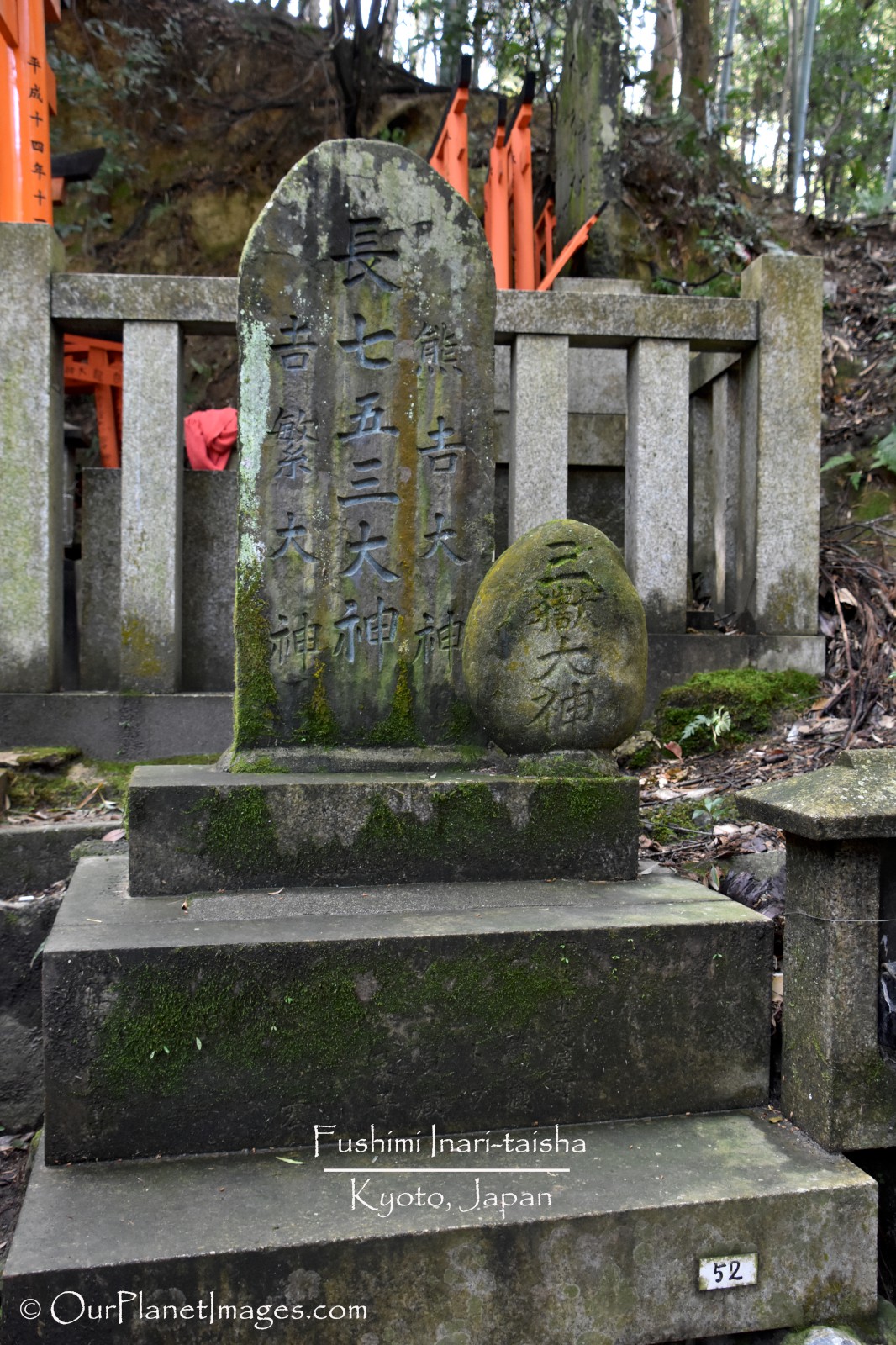
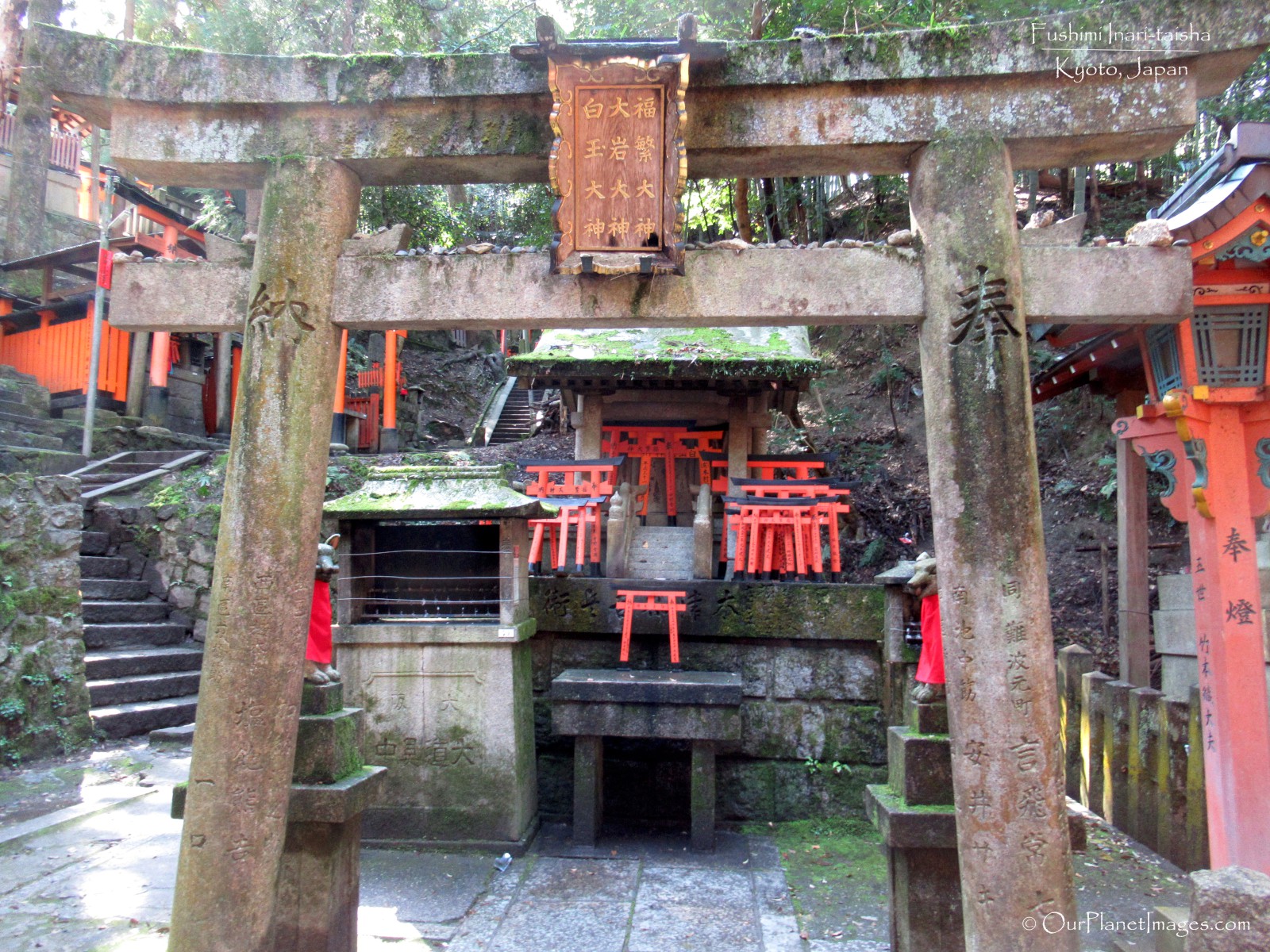
The Dust on My Shoes
By far, the most impressionable experience of visiting Fushimi Inari-tasha Shrine was seeing the thousands of torii gates. Some places the gates were very close together and created an effect that gave me the feeling that I was in a tunnel.
I found it refreshing that such a large amount of construction could be done on the hill side without disturbing the feeling of being in nature. While there were places with a large number of people, walking along the torii gate pathway was more like being in a park than visiting one of the most popular tourist attractions.
My biggest surprise was all of the memorials. The memorials were different from other memorials that I have visited because they have a sense of both past and present. The memorials are very old but the small torii gates laid at each memorial site are obviously new. This gave me the impression that honoring the past has not been forgotten by the present.
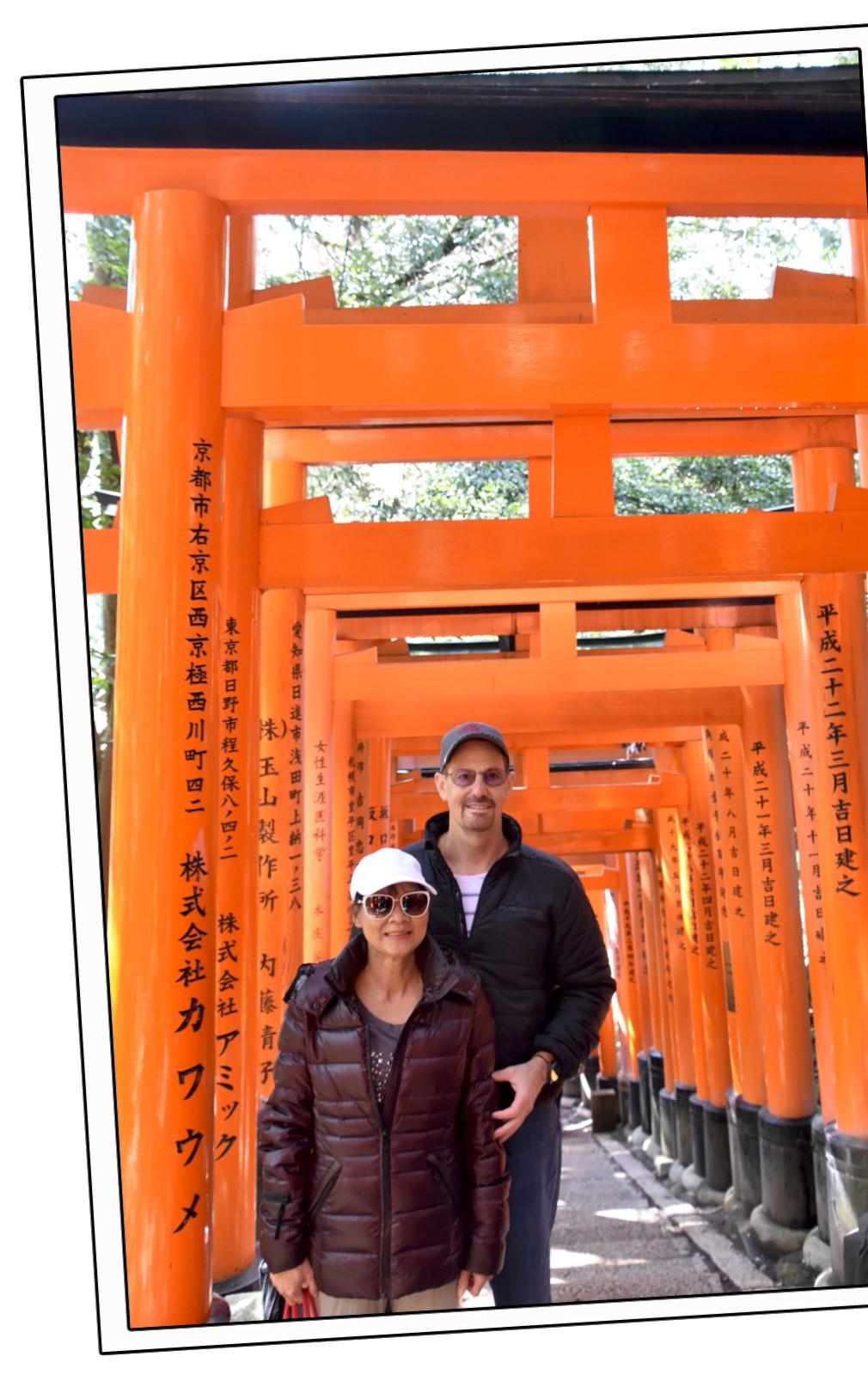
Japanese culture is always nearby
As I traveled through Japan, one thing that I always notices was the presence the Japanese culture. Many times when I visit world famous place I am so completely focused on the main attraction that I don’t notice the activity around me but in Japan the evidence that the local people have not forgotten their culture could not be overlooked.
Japan is known for being modern and high tech but as the country has modernized the culture has not been forgotten.
Don’t overlook the culture!
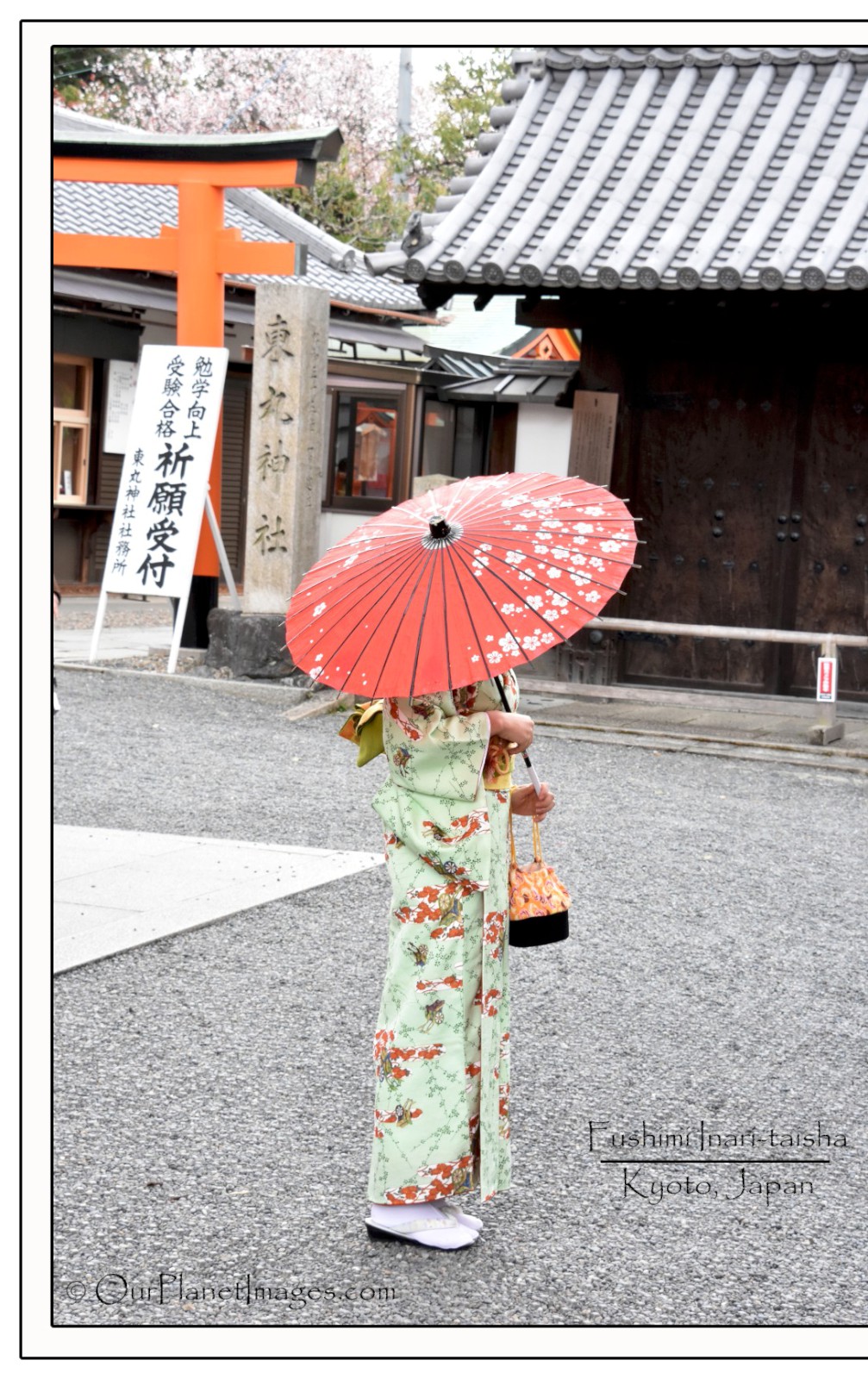
Related Posts
